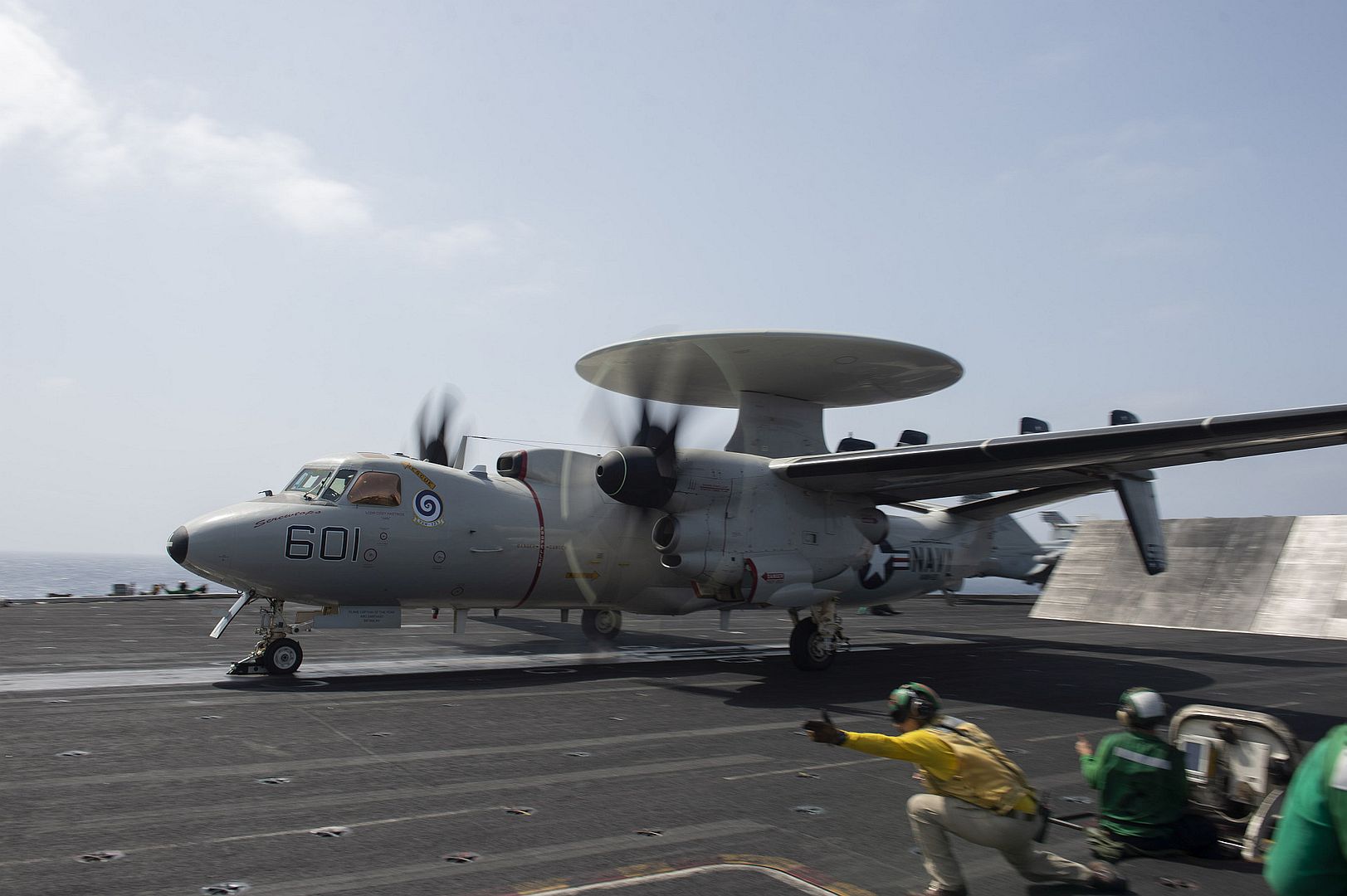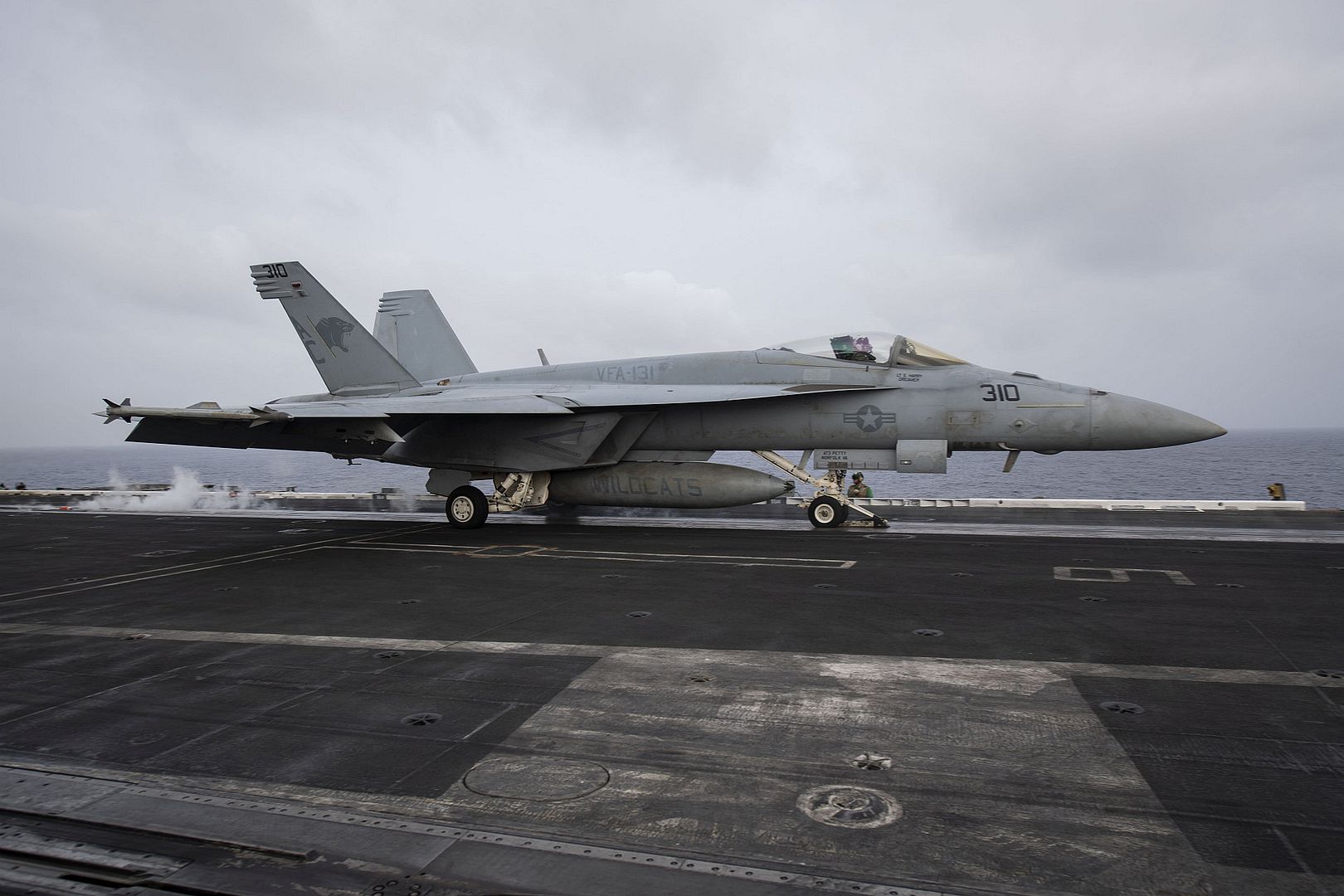Forums
- Forums
- Axis And Allies Forum
- General Discussion
- Aviation News
Aviation News
Post a reply
- Go to Next topic
- Go to Welcome
- Go to Introduce Yourself
- Go to General Discussion
- Go to Screenshots, Images and Videos
- Go to Off topic
- Go to Works in Progress
- Go to Skinning Tips / Tutorials
- Go to Skin Requests
- Go to IJAAF Library
- Go to Luftwaffe Library
- Go to RAF Library
- Go to USAAF / USN Library
- Go to Misc Library
- Go to The Ops Room
- Go to Made in Germany
- Go to Campaigns and Missions
- Go to Works in Progress
- Go to Juri's Air-Raid Shelter
- Go to Campaigns and Missions
- Go to Works in Progress
- Go to Skinpacks
- Go to External Projects Discussion
- Go to Books & Resources
-
 Main AdminPETERSON AIR FORCE BASE, Colo. ? North American Aerospace Defense Command F-22 Raptors, supported by KC-135 Stratotankers and an E-3 Airborne Warning and Control System, successfully completed two intercepts of Russian bomber aircraft formations entering the Alaskan Air Defense Identification Zone last night.
Main AdminPETERSON AIR FORCE BASE, Colo. ? North American Aerospace Defense Command F-22 Raptors, supported by KC-135 Stratotankers and an E-3 Airborne Warning and Control System, successfully completed two intercepts of Russian bomber aircraft formations entering the Alaskan Air Defense Identification Zone last night.
The first formation of Russian aircraft consisted of two Tu-95 bombers, accompanied by two Su-35 fighter jets and was supported by an A-50 airborne early warning and control aircraft.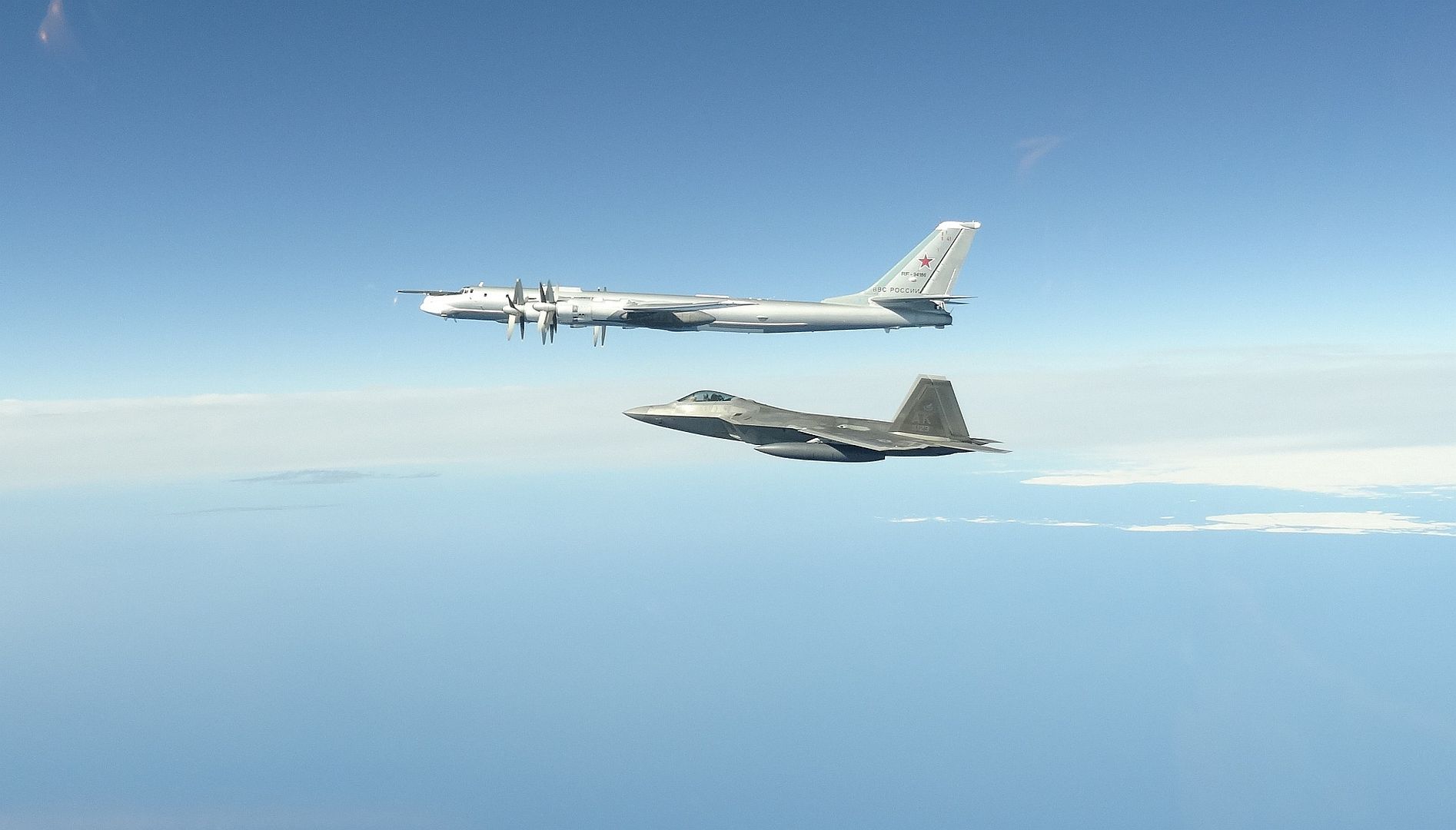
The second formation consisted of two Tu-95 bombers supported by an A-50. The Russian military aircraft came within 32 nautical miles of Alaskan shores; however, remained in international airspace and at no time did they enter United States sovereign airspace.
?For the eighth time this year, Russian military aircraft have penetrated our Canadian or Alaskan Air Defense Identification Zones and each and every time NORAD forces were ready to meet this challenge,? said General Terrence J. O?Shaughnessy, the NORAD Commander. ?Despite the COVID-19 pandemic, NORAD constantly monitors the northern approaches to our nations and our operations make it clear that we will conduct homeland defense efforts 24 hours a day, 7 days a week, 365 days a year.?
NORAD employs a layered defense network of radars, satellites, and fighter aircraft to identify aircraft and determine the appropriate response. The identification and monitoring of aircraft entering a US or Canadian ADIZ demonstrates how NORAD executes its aerospace warning and aerospace control missions for the United States and Canada.
Operation NOBLE EAGLE is the name given to all air sovereignty and air defense missions in North America. NORAD is a binational command focused on the defense of both the U.S. and Canada. The response to potential aerospace threats does not distinguish between the two nations, and draws on forces from both countries.
(Courtesy Photo's)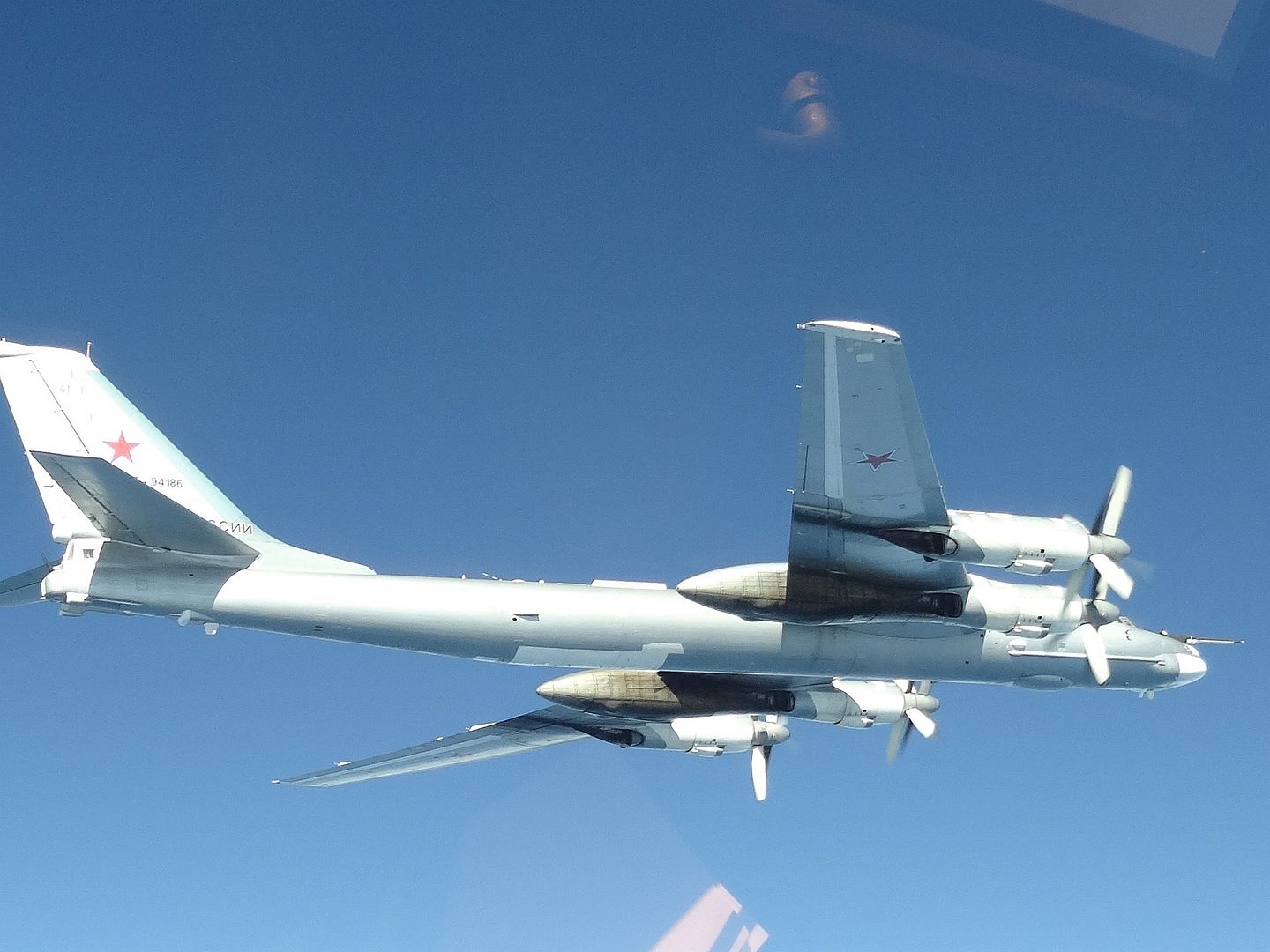
An F-16 Fighting Falcon, assigned to the Ohio National Guard?s 180th Fighter Wing, takes off for a nighttime training mission, June 16, 2020. The 180FW is the only F-16 fighter wing in the state of Ohio, whose mission is to provide for America; protection of the homeland, effective combat power and defense support to civil authorities, while developing Airmen, supporting their families and serving in our community. U.S. Air National Guard photo's by Senior Master Sgt. Beth Holliker.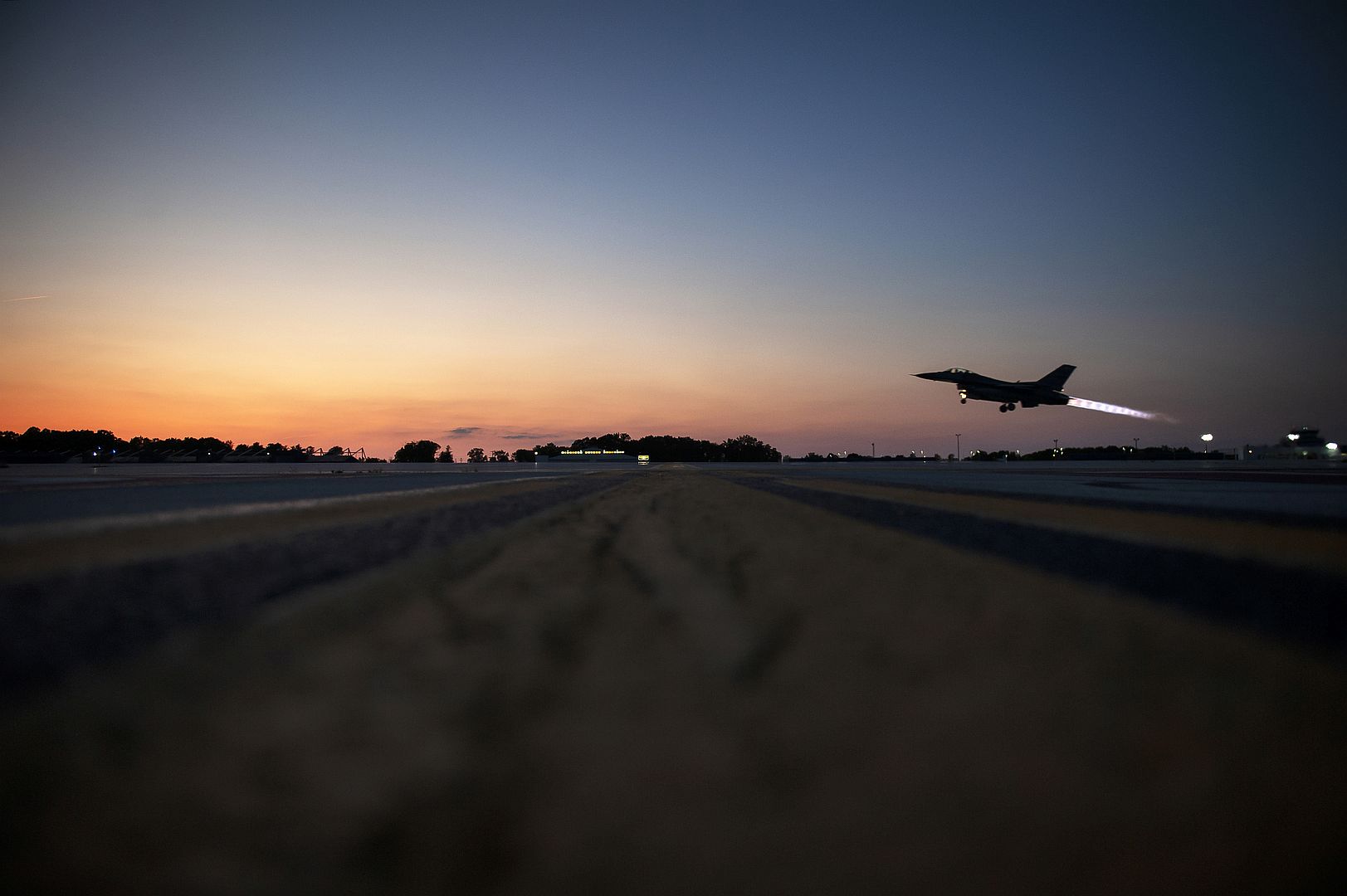
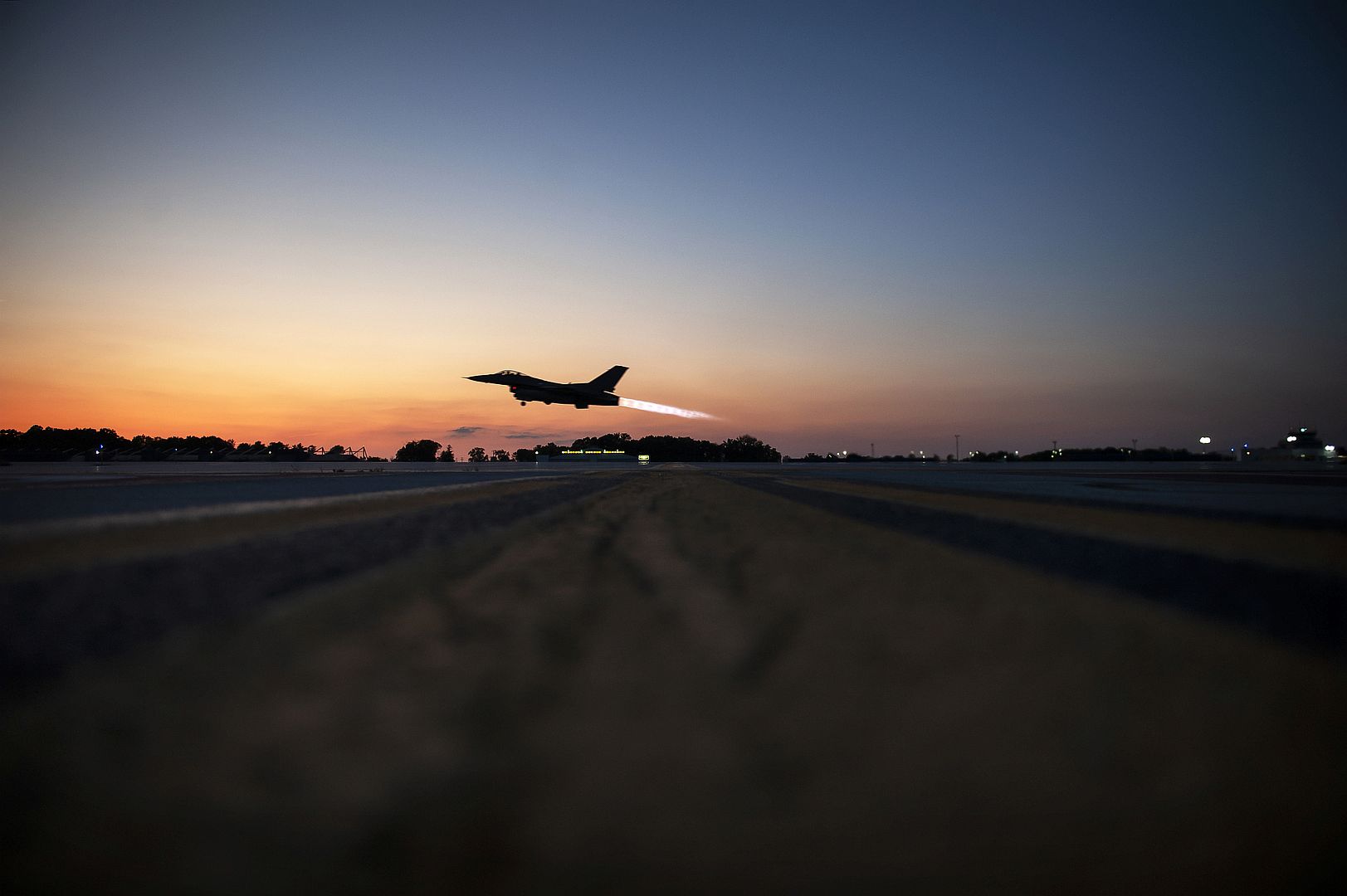
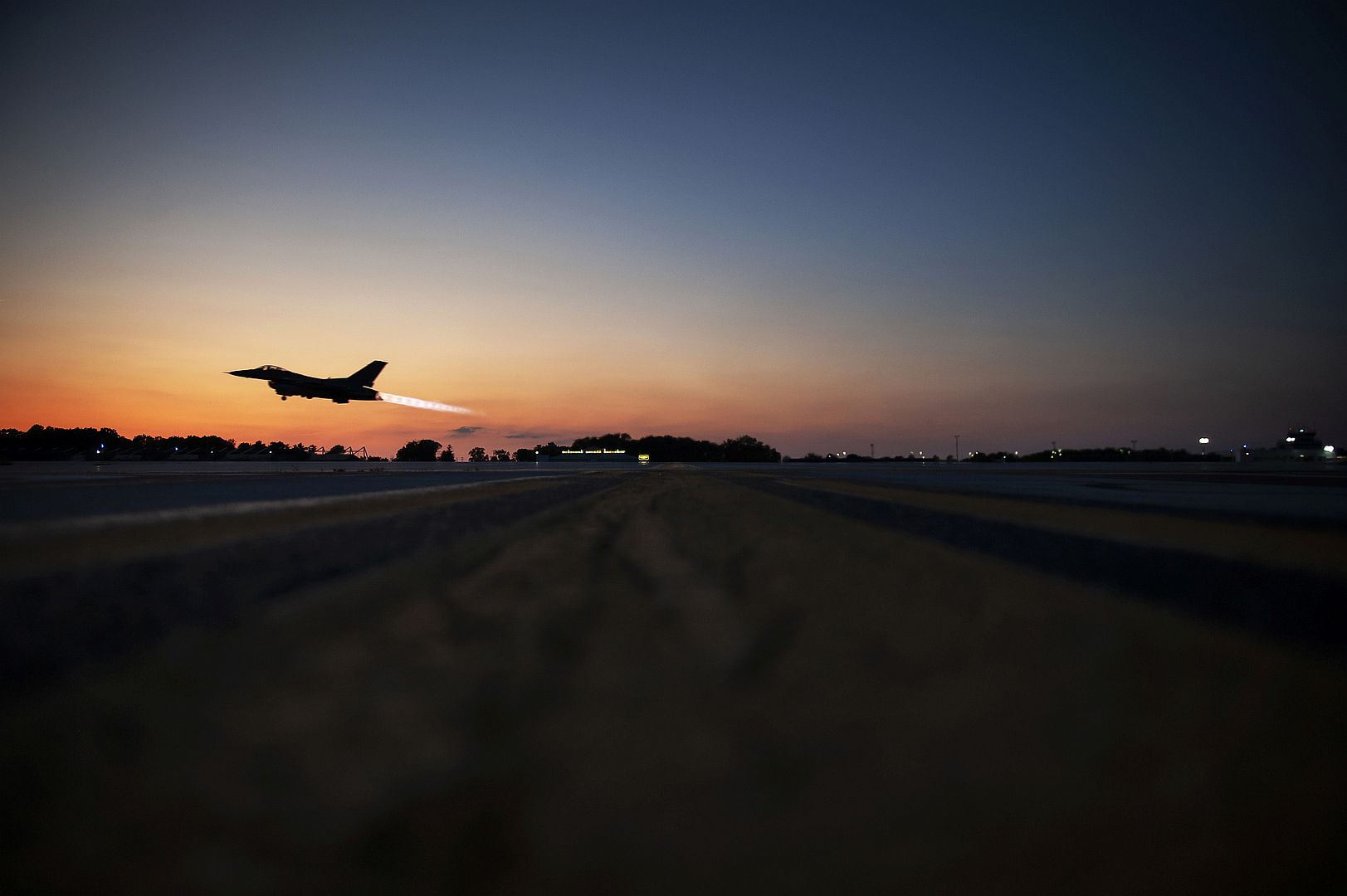
ST. LOUIS, Mo., June 17, 2020 ? Boeing [NYSE: BA] delivered the first two F/A-18 Block III Super Hornets to the U.S. Navy for flight testing. One jet is a single-seat E model and the other is a two-seat F model.
?The aircraft will be used for carrier suitability and integration testing of all Block III mission system components,? said Steve Wade, Boeing vice president, F/A-18 & EA-18G programs. ?These test jets will ensure crews have plenty of time to become comfortable with the new, next-generation systems before receiving operational aircraft.?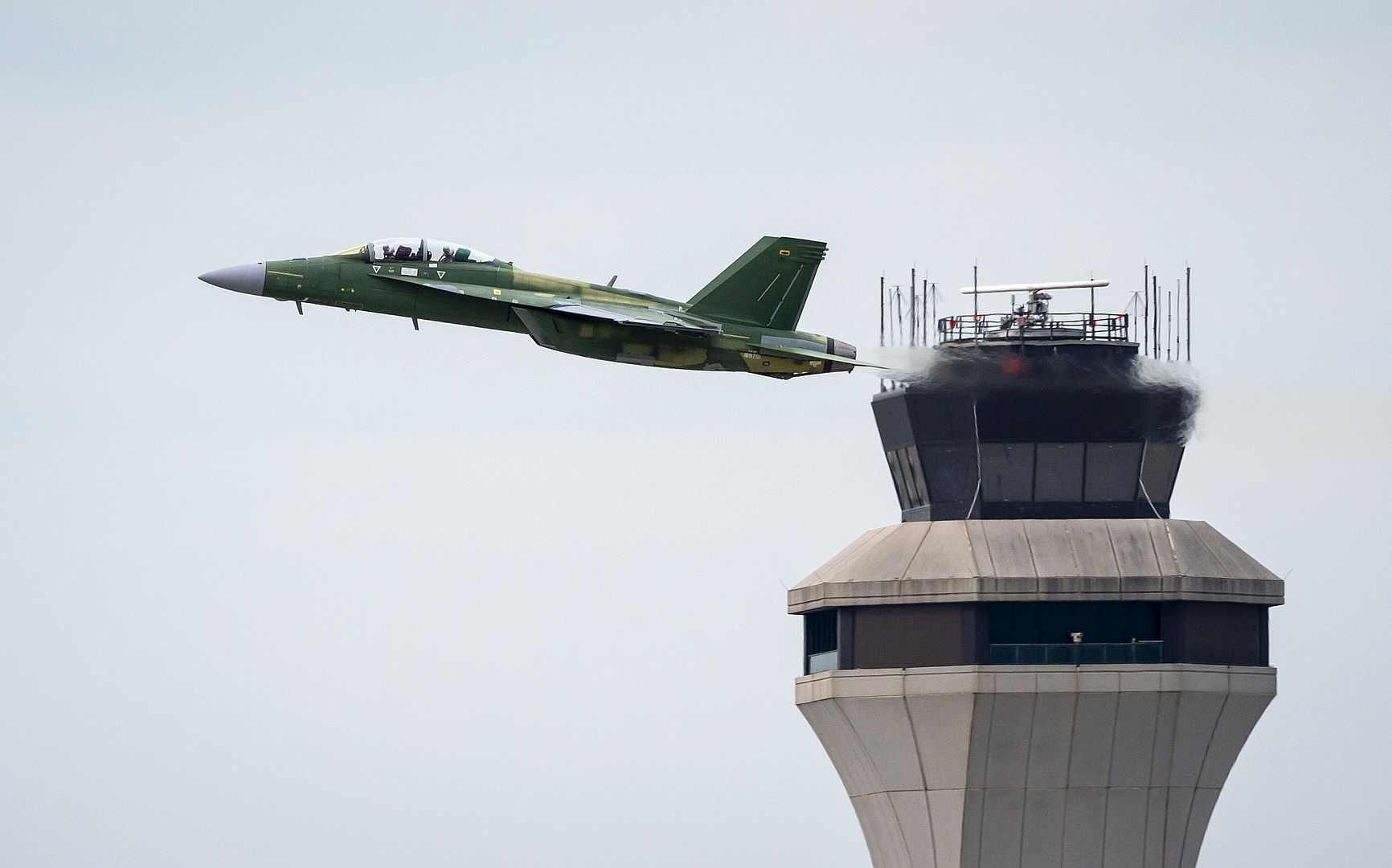
The Navy will use the aircraft to familiarize pilots with the advanced cockpit system?s new 10-inch-by-19-inch touchscreen display and test the capabilities delivered with the enhanced network capability.
In addition to these enhancements, the Block III configuration adds capability upgrades that include longer range, reduced radar signature and an enhanced communication system. The fighter?s life also will be extended from 6,000 hours to 10,000 hours.
Last year, Boeing was awarded a contract from the Navy for 78 Block III Super Hornets. Boeing and Navy test teams have also flown conformal fuel tank prototypes.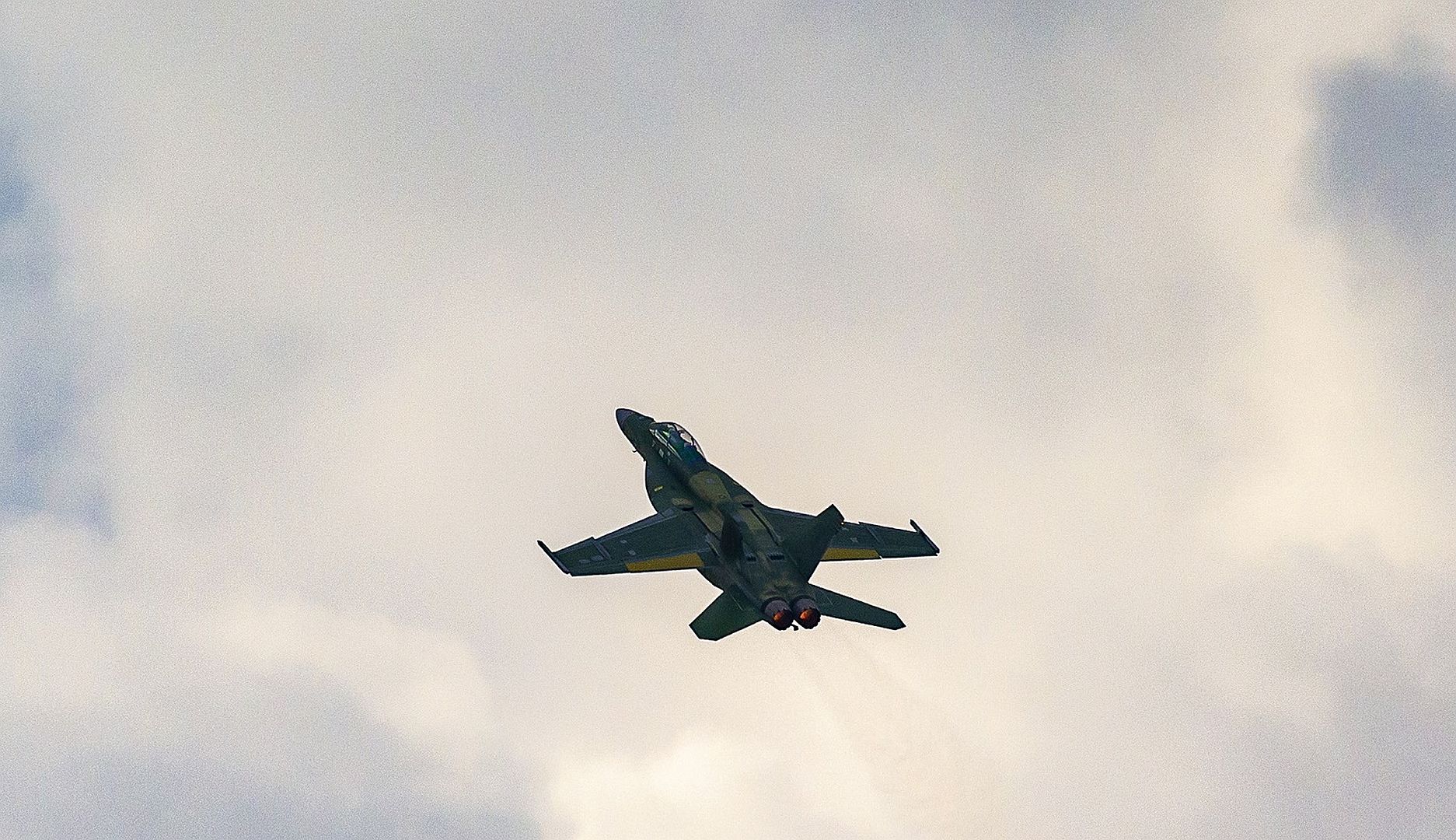
A Royal Air Force transport aircraft has been adapted to carry medical patients in record time and at no cost.
In just two months two BAe146 Mk.3 aircraft operated by 32 (The Royal) Squadron at Royal Air Force Northolt
have been adapted to transport critically ill patients and RAF medical staff for the first time.
Personnel from Tactical Medical Wing and 32(TR) Sqn looked at the options for using the BAe146 on 1st April and concluded that stretcher stanchions already in use on Voyager could potentially be affixed to pallet flooring inside the aircraft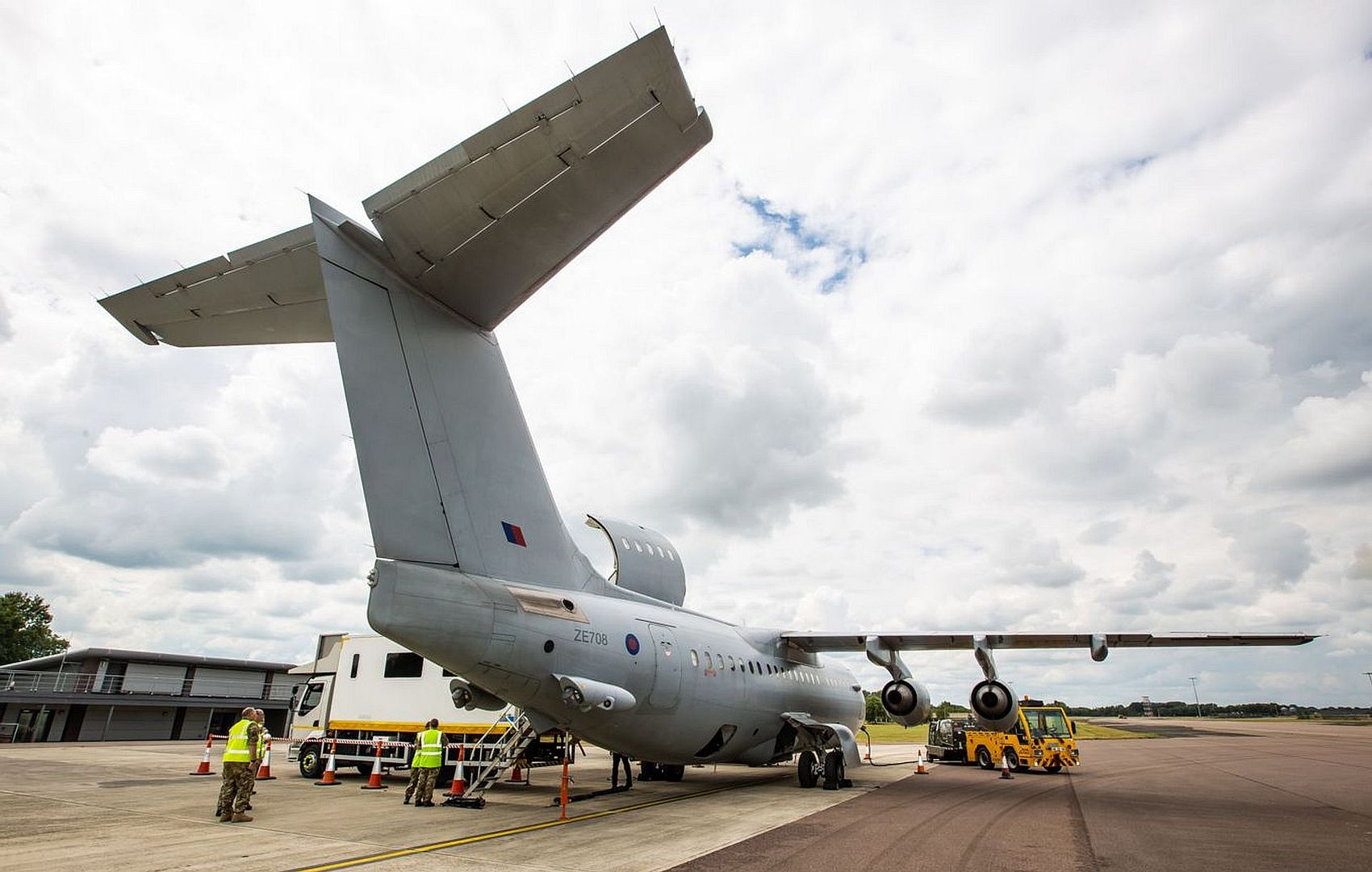
The engineering task was passed to the Joint Air Delivery Test & Evaluation Unit at RAF Brize Norton
who swiftly designed and produced a cleared and serviceable solution. Within a fortnight the adaptation was ready for prototype trials which determined the adaptations were suitable for all types of aeromedical evacuation, including use by the Critical Care Air Support Team.
(photo's MOD)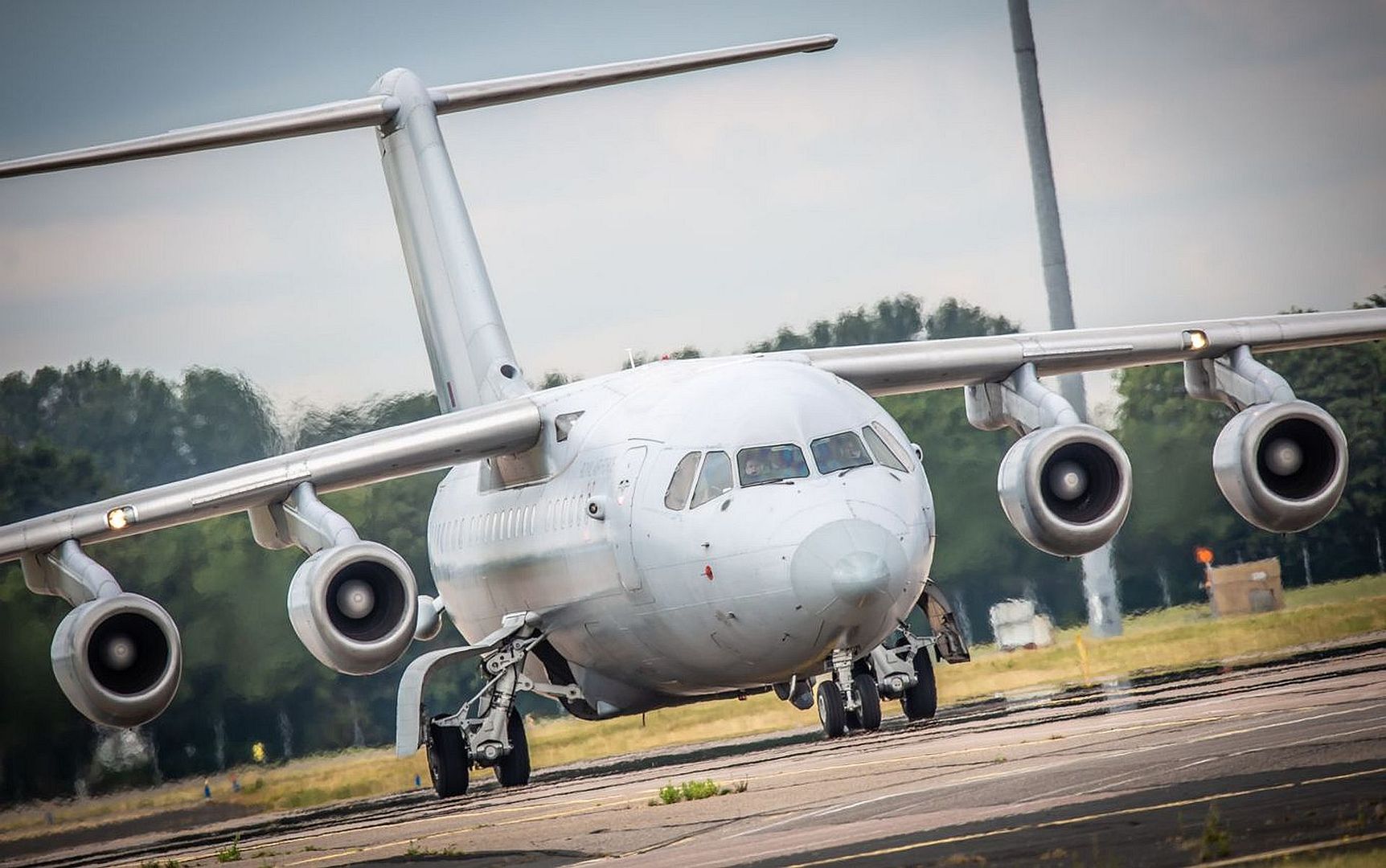
-
 Main AdminAn F-35A Lightning II assigned to the 356th Fighter Squadron takes off from the Eielson Air Force Base flightline in Alaska, June 17, 2020. The flight marked the 100th sortie for Eielson?s F-35As. (U.S. Air Force photo by Tech. Sgt. Jerilyn Quintanilla)
Main AdminAn F-35A Lightning II assigned to the 356th Fighter Squadron takes off from the Eielson Air Force Base flightline in Alaska, June 17, 2020. The flight marked the 100th sortie for Eielson?s F-35As. (U.S. Air Force photo by Tech. Sgt. Jerilyn Quintanilla)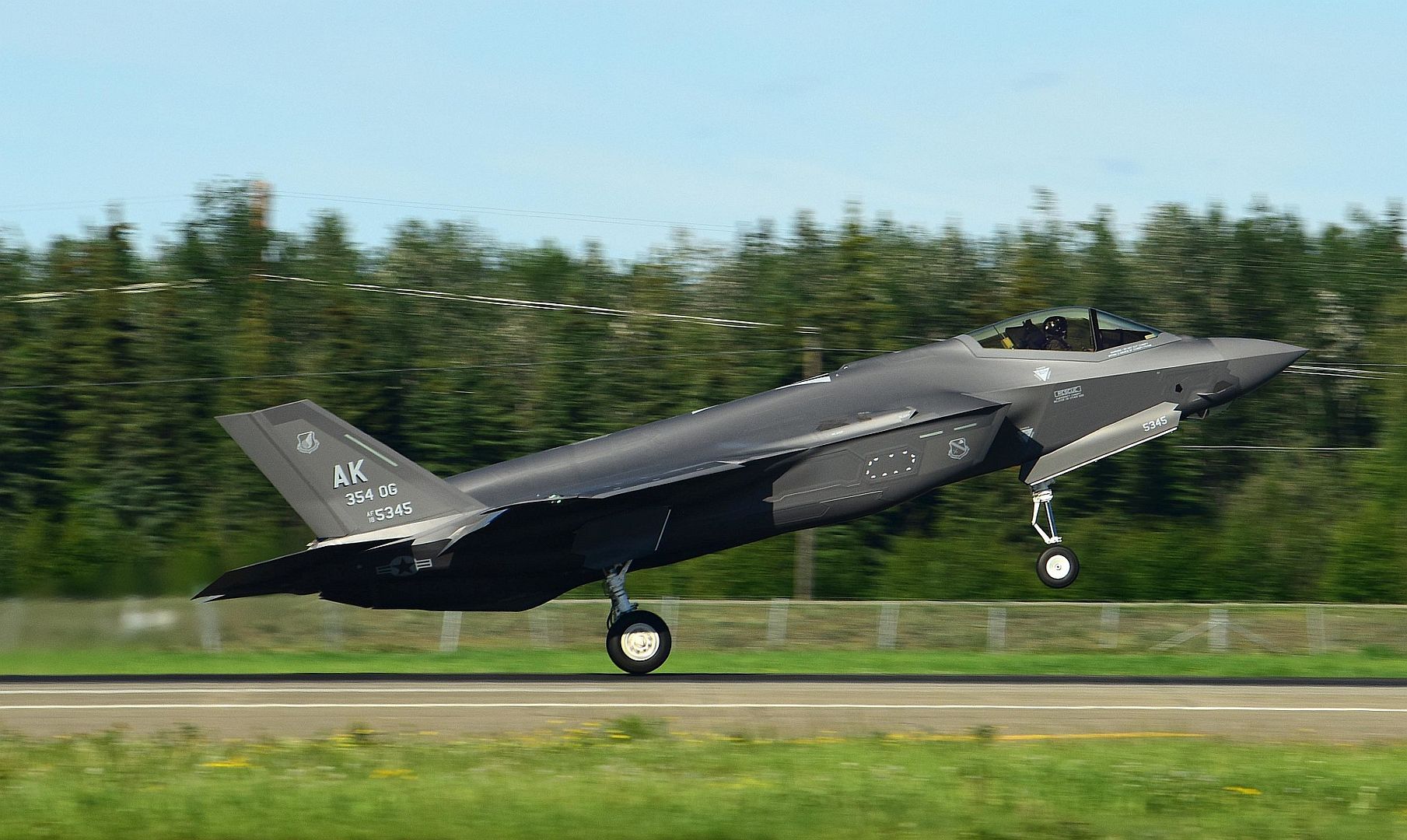
A P-51 Mustang flies over the runway during a heritage flight practice June 17, 2020, Hill Air Force Base, Utah. The Air Force Heritage Flight Foundation partners with Air Force aerial demonstration teams to showcase the past, present, and future of aviation. (U.S. Air Force photo by Capt. Kip Sumner)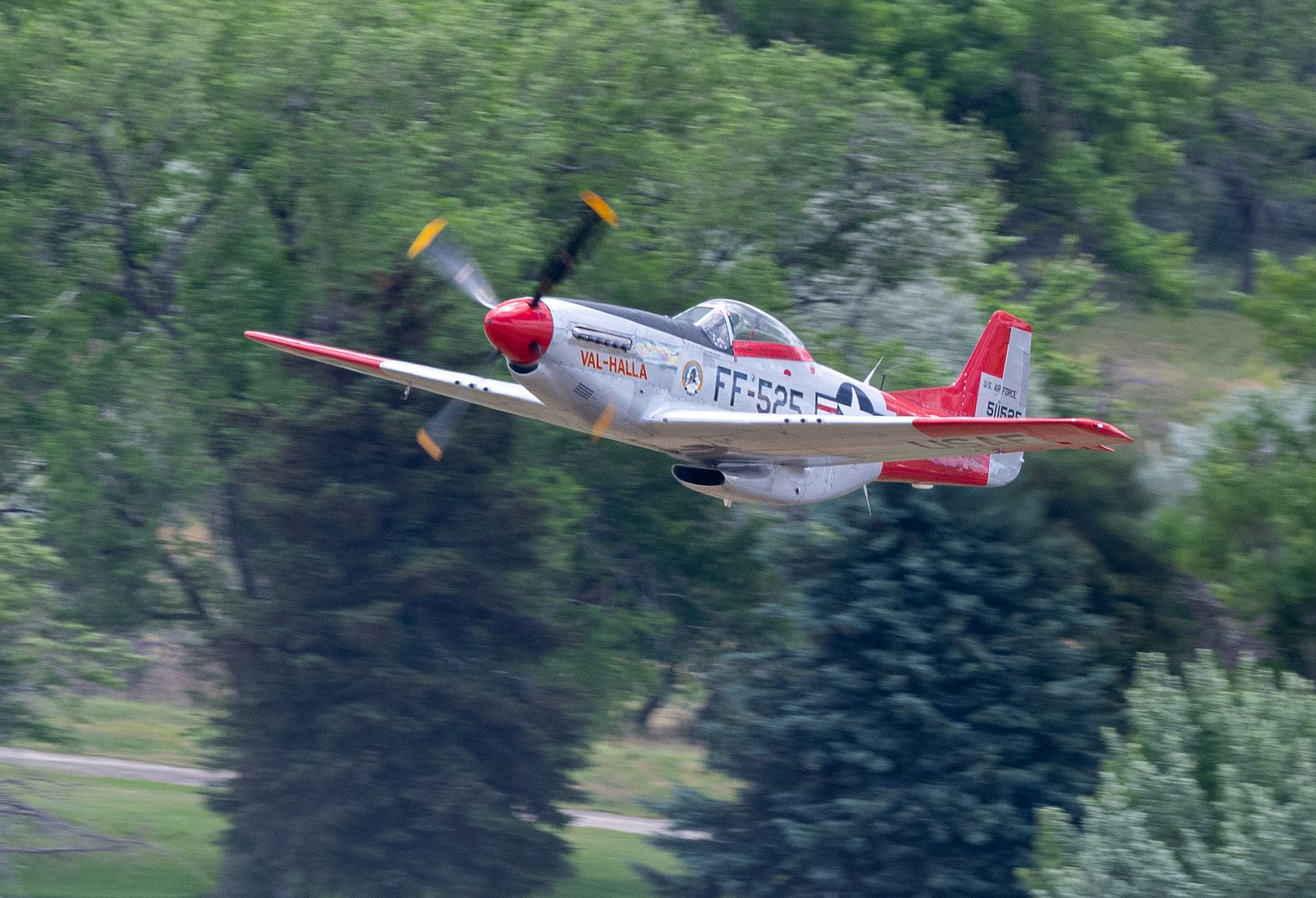
U.S. Air Force Capt. Kristin "BEO" Wolfe, the F-35A Demonstration Team pilot, performs the "dedication pass" maneuver during a flight practice June 16, 2020, Hill Air Force Base, Utah. The dedication pass maneuver is intended to provide an aerial salute to service members past and present as well as provide a photo opportunity for onlooking audiences. (U.S. Air Force photo by Capt. Kip Sumner)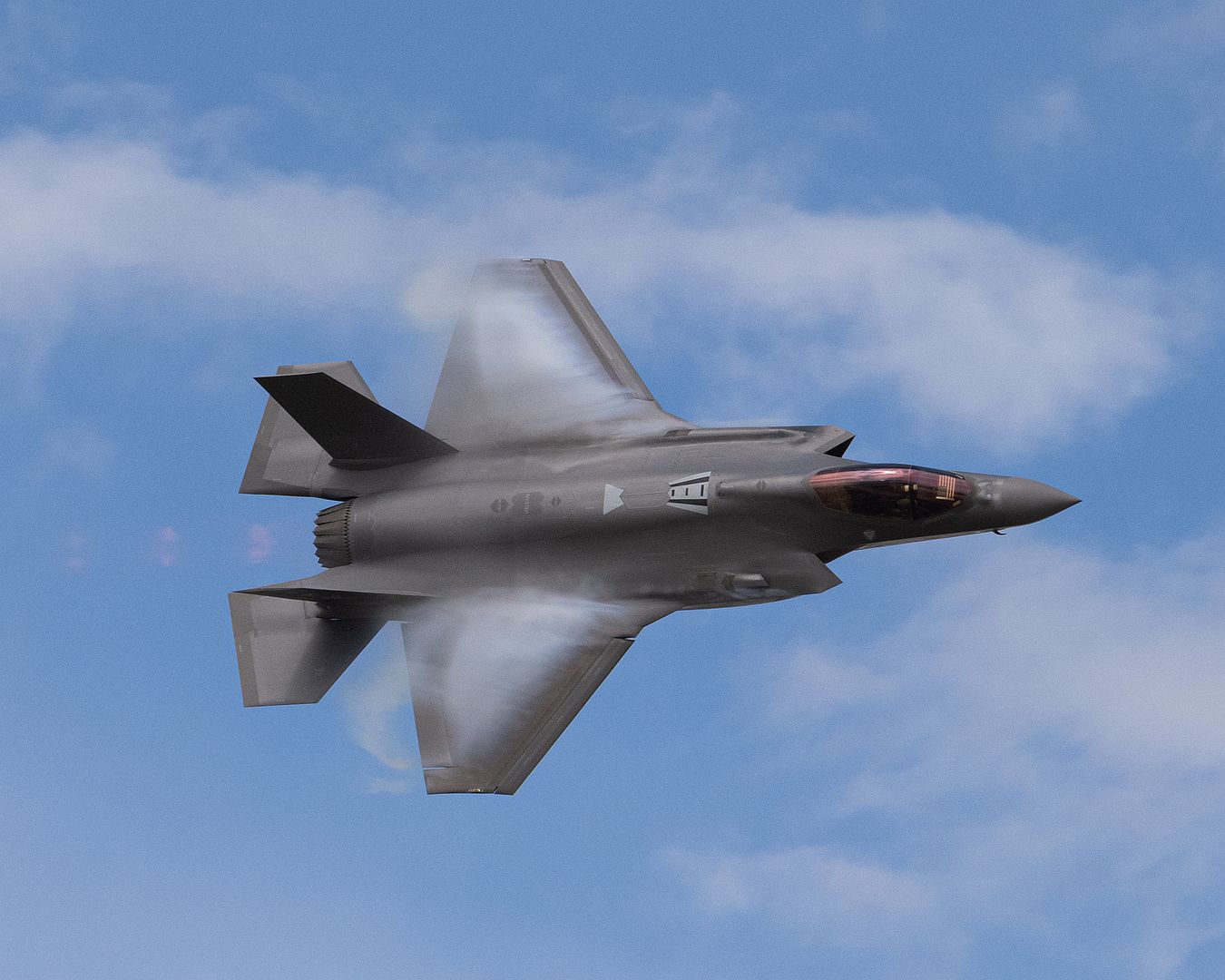
A P-51 Mustang flies in formation with U.S. Air Force Capt. Kristin "BEO" Wolfe, the F-35A Demonstration Team pilot, during a heritage flight practice June 17, 2020, Hill Air Force Base, Utah. The F-35 demo team routinely flies in formation with historic aircraft from past conflicts in "heritage flights" performances at airshows, showcasing the past, present, and future of aviation. (U.S. Air Force photo by Capt. Kip Sumner)
PHILIPPINE SEA (June 17, 2020) ? An F/A-18F Super Hornet, assigned to the ?Black Knights? of Strike Fighter Squadron (VFA) 154, flies over the aircraft carrier USS Theodore Roosevelt (CVN 71) June 17, 2020. The Theodore Roosevelt Carrier Strike Group is on a scheduled deployment to the Indo-Pacific. (U.S. Navy photo by Mass Communication Specialist 3rd Class Zachary Wheeler)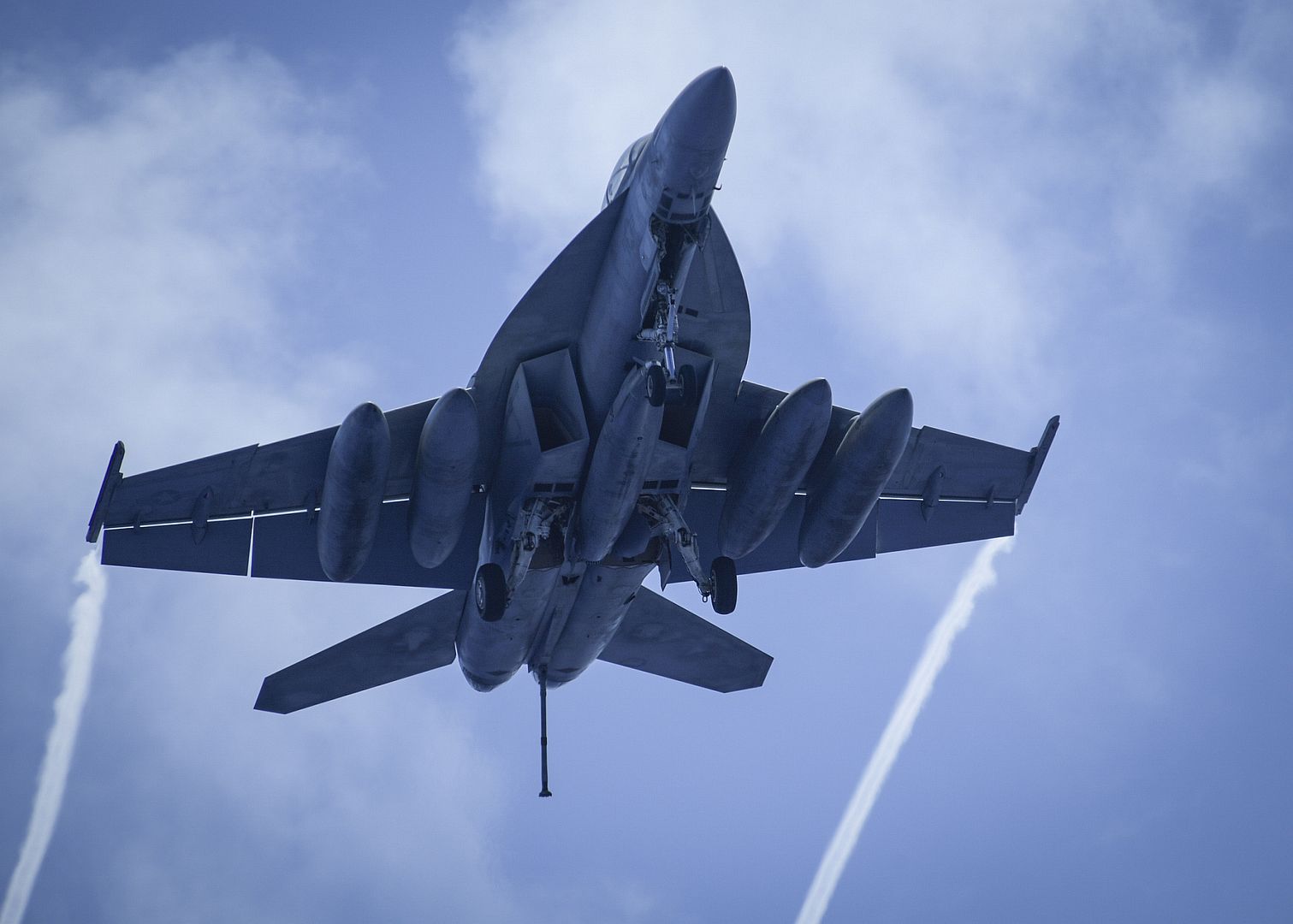
ARABIAN SEA (June 17, 2020) An E-2C Hawkeye, attached to the Screwtops of Airborne Command and Control Squadron 123 takes off from the flight deck during flight operations aboard the aircraft carrier USS Dwight D. Eisenhower (CVN 69), June 17, 2020. Ike is deployed to the U.S. 5th Fleet area of operations in support of naval operations to ensure maritime stability and security in the Central Region, connecting the Mediterranean and Pacific through the Western Indian Ocean and three critical chokepoints to the free flow of global commerce. (U.S. Navy photo by Mass Communication Specialist Seaman Apprentice Orion K. Shotton/Released)
LEMOORE, California (NNS) -- Pilots from Strike Fighter Squadron (VFA) 125 ?Rough Raiders? and VFA-147 ?Argonauts? were the first TOPGUN students to complete the course in the F-35C Lightning II.
Maj. Derek Heinz from the Rough Raiders and Lt. William Goodwin, III from the Argonauts successfully completed the 13-week Navy Strike Fighter Tactics Instructor (SFTI) course at the Naval Aviation Warfighting Development Center (NAWDC) at Naval Air Station Fallon, Nev. The SFTI course, otherwise known as TOPGUN, is an individual-level training course loaded with classroom lectures and labs, as well as simulated and live-fly events that are focused on the newest advanced tactical recommendations, and designed to create newly-minted tactics instructors who are ready to return and train the Fleet.
?Our focus on the students that go through TOPGUN is not limited to teaching them the tactics, techniques, and procedures that are required for them to successfully employ their aircraft, integrated into a larger force,? said NAWDC TOPGUN Department Head, Cmdr. Timothy Myers. ?We are also in the business of teaching our graduates how to instruct other students so that when they go back to the Fleet, they are able to instruct at a very high level.?
For the last few years, NAWDC and TOPGUN have been working to develop the skill-sets, curriculum, and experienced instructors required to execute a syllabus that fully integrates F-35C tactics, techniques, and procedures. While all F-35C tactics instructors have completed the TOPGUN course previously, this is the first time TOPGUN has graduated students who are currently flying the Lightning II, utilizing a syllabus that has been developed, from the ground up, specifically for F-35C integrated operations. This was accomplished by the gradual introduction of F-35C tactics into the training curriculum for previous classes. The result is a cadre of highly-trained instructors executing a fully-integrated F-35C syllabus, providing well-rounded ?graduate-level? training for the fifth-generation fighter to take back to the Fleet.
?Graduating Strike Fighter Tactics Instructors allows us to accelerate learning by feeding TOPGUN training back to the Fleet, elevating the lethality and survivability of both the individual aircraft as well as the Carrier Strike Group,? said Myers. ?The Lightning II proved its value to the Navy during every phase of the TOPGUN course, and its integration with the F/A-18E/F Super Hornet, E/A-18G Growler and E-2C/D Hawkeye demonstrated that the powerful combination of 4th and 5th generation fighters, with advanced electronic attack, and command and control, is a force-multiplier against advanced threats.?
Since completing the TOPGUN course last month, Heinz and Goodwin have returned to instruct and train the Fleet in the latest TOPGUN tactics, techniques and procedures, with a particular emphasis on ensuring that pilots will have the requisite skillsets to effectively employ the Lightning II during its first operational deployment and beyond.
?Our focus is on assisting the SFTIs at the operational Fleet squadron pushing the big picture tactics and ensuring that everything is ready to go for the first and subsequent F-35C carrier deployments,? said Goodwin. ?The idea is that VFA-147 SFTIs can use the standards of tactical execution we provide to train their own people and take that knowledge with them through deployment. We are here to ensure that they are set up for success.?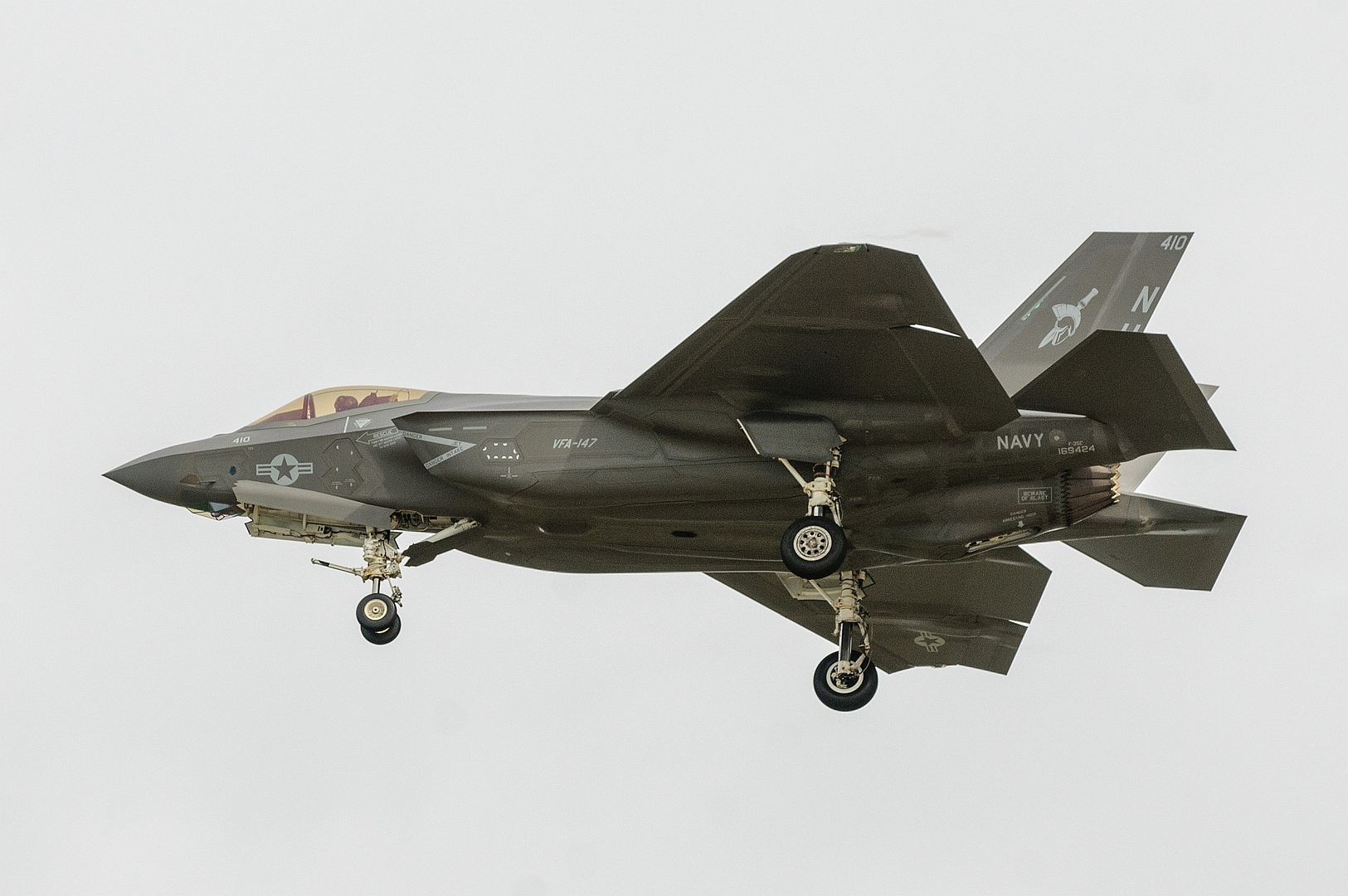
?While my role as an F-35C instructor is still primarily focused on the students at the FRS, my perspective on what I teach and how I teach it most certainly has grown since completing TOPGUN? said Heinz. ?I?m still training students to fly the aircraft, it?s just now I have the additional responsibility as an SFTI to bring that advanced training to the Fleet, while helping maintain the TOPGUN training syllabus and ensuring standardization of training for all instructors. We are always working to maintain the highest standards of training.?
This milestone is the latest feather in the cap for the U.S. Navy?s F-35C program. Since the stand-up of Commander, Joint Strike Fighter Wing in August 2018, the program has declared Safe-for-Flight Operations Certification (SFFOC) for both VFA-147 ?Argonauts? and VMFA-314 ?Black Knights.? In February 2019, the Navy and Marine Corps both declared Initial Operational Capability (IOC) for the F-35C and VFA-125, the F-35C fleet replacement squadron (FRS), graduated its first newly-winged F-35C aviators. In May 2019, VFA-101 ?Grim Reapers? was deactivated, consolidating most of its resources at NAS Lemoore. Additionally, both VFA-147 and VFA-125 continue to meet program requirements, pass inspections, and receive certifications while continuously participating in numerous detachments both ashore and at sea.
?This tremendous accomplishment is yet another step for the F-35C community as we continue to focus on delivering this game-changing aircraft to the Fleet. The graduates of the first F-35C TOPGUN class are back in Lemoore instructing VFA-147 in the latest tactics that will, in turn, be brought to the fight during Carrier Air Wing Two?s first deployment with the Navy?s Joint Strike Fighter,? said Capt. Adan Covarrubias, Commander, Joint Strike Fighter Wing. ?Additionally, the tactics that were developed during this first F-35C class are currently being integrated into the carrier air wing?s work-up cycle, truly making them a more lethal, Carrier and Air Wing of the future.?
Commander, Joint Strike Fighter Wing (CJSFW), based at Naval Air Station Lemoore, Calif. is home to U.S. the Navy?s F-35C fleet squadrons and the sole location for the Fleet Replacement Squadron (FRS), VFA-125 that trains both Navy and Marine Corps carrier-based JSF pilots. The mission-ready F-35C is the latest addition to U.S. Navy?s Carrier Air Wing. With its stealth technology, state-of-the-art avionics, advanced sensors, weapons capacity and range, the F-35C provides unprecedented air superiority, interdiction, suppression of enemy air defenses and close-air-support as well as advanced command and control functions through fused sensors. These state-of-the-art capabilities give pilots and combatant commanders unrivaled battlespace awareness and lethality.
(U.S. Navy photo/Released)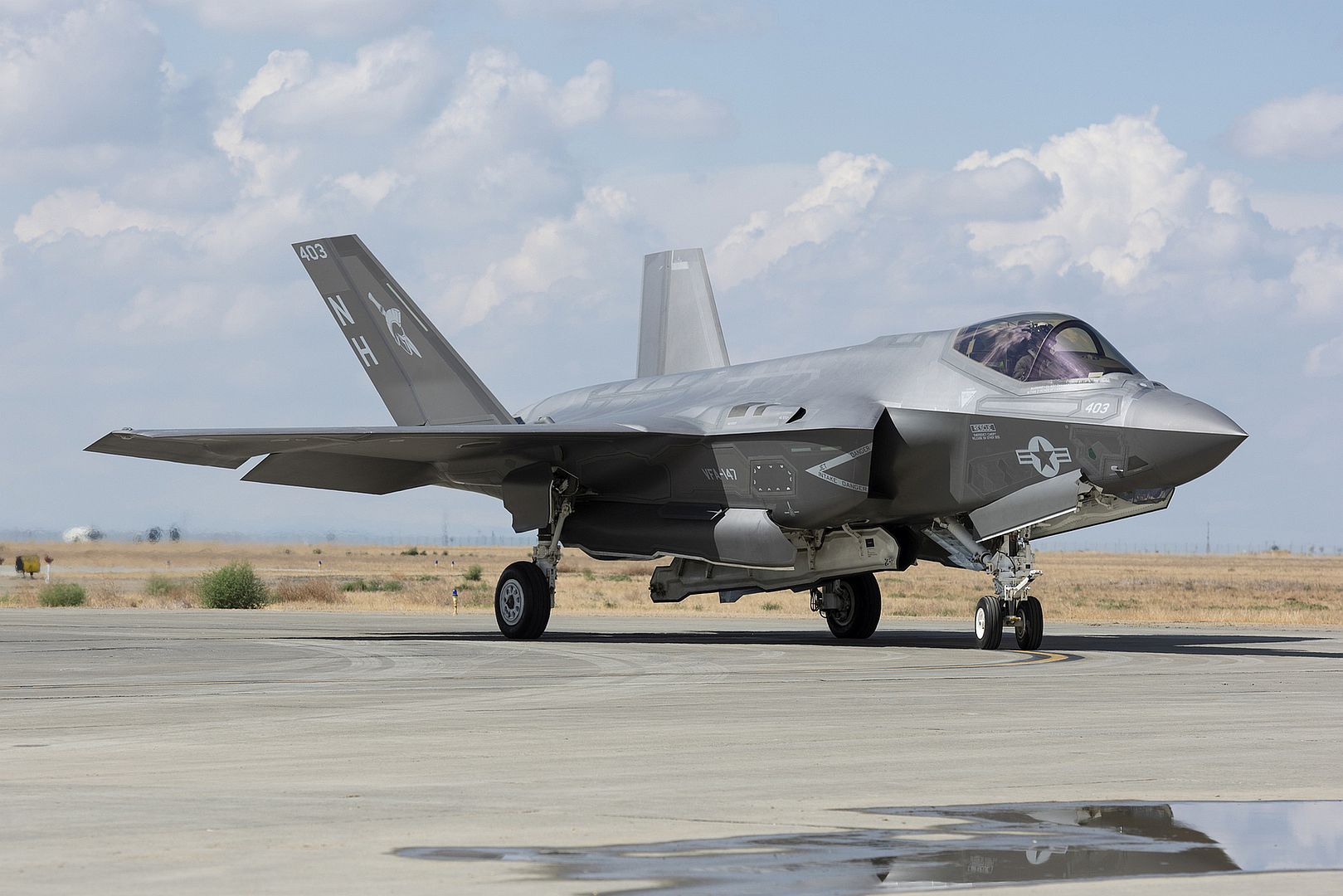
18.06.2020
Crews of 45 planes and helicopters of the 4th air force and air defence army of the Southern Military District, involved in the air part of the Victory parade on June 24 in Rostov-on-Don, performed a training flight over the city.
During the training flight, the crews of combat and transport planes and helicopters practiced the formation flying in groups, flights and pairs at reduced distances with minimal intervals.
The aircraft flew at speeds of 100 - 180 km/h with an interval of 50 m between the helicopter blades, while tactical aircraft flew at an altitude of 250-300 m at a speed of about 600 km/h and military transport aircraft at an altitude of 300 m at a speed of 500-600 km/h.
The aircraft are manned with the highly qualified pilots to perform such flights.
More than 130 aircraft organized in aviation groups will fly over the hero-cities of Volgograd, Kerch, Novorossiysk, Sevastopol, as well as Rostov-on-Don, Stavropol, Kaspiysk, Novocherkassk, Simpferopol and Vladikavkaz at the final stage of the parade. The Tu-134, An-26, An-12 and L-410 of the military transport aviation of the SMD; the Su-24M, Su-25SM, Su-27SM3, Su-30SM, Su-34 of the tactical aviation of the SMD; the Tu-142MK, Be-12, Il-38N of the naval aviation of the Black Sea Fleet as well as the Mi-8AMTSh, Mi-26, Mi-28N, Mi-35M and Ka-52 of the army aviation of the SMD will participate in the air parade.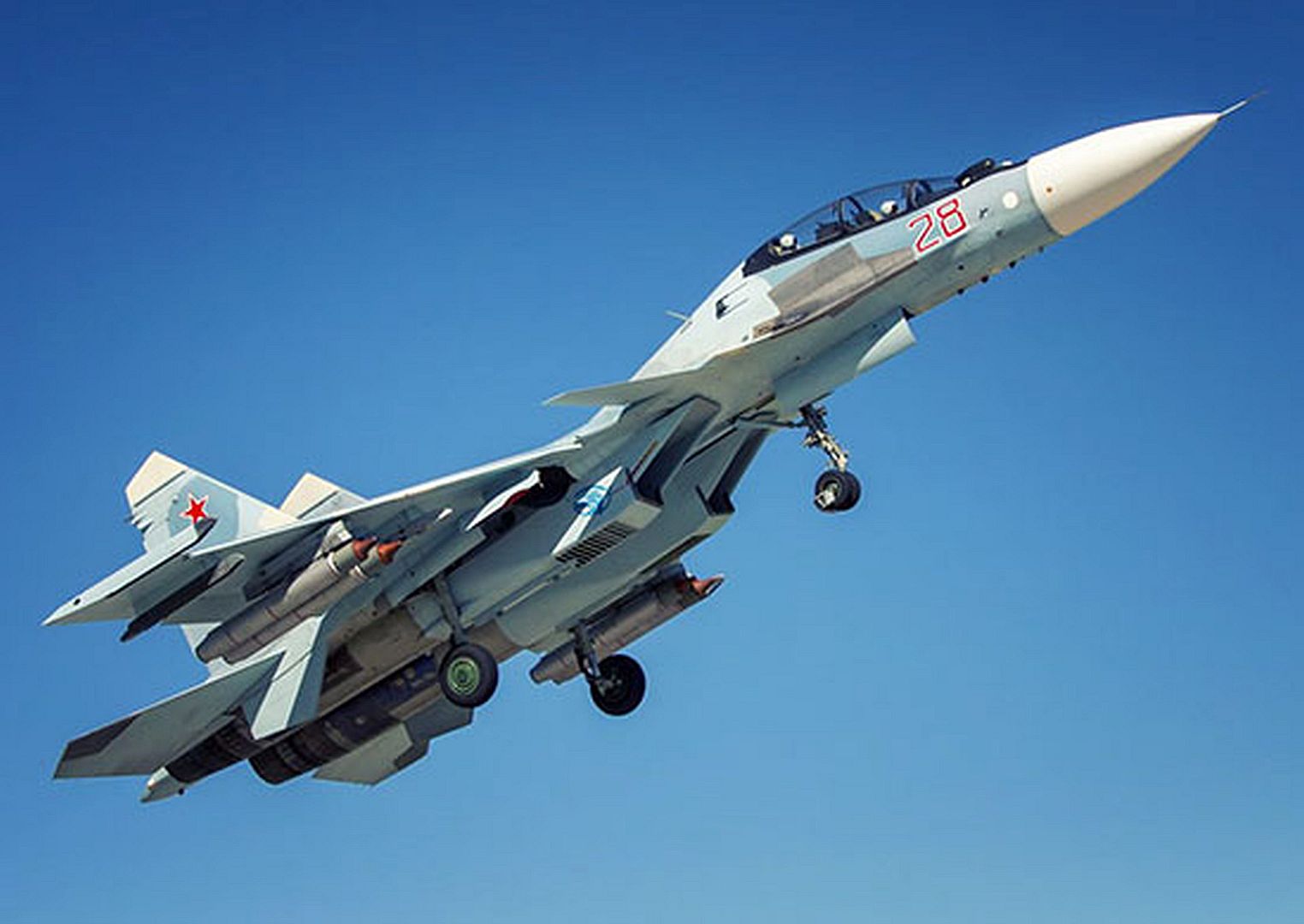
-
 Main AdminU.S. Marines with Combat Logistics Battalion 3, 3rd Marine Logistics Group, attach an M777 Howitzer to a CH-53E during hoist lift operations with Marines from Marine Heavy Helicopter Squadron 463 and 1st Battalion, 12th Marine Regiment on Marine Corps Base Hawaii, June 18, 2020. CLB-3, 1st Battalion, 12th Marines and HMH-463 executed the operation in order to increase battlefield proficiency and combat readiness. (U.S. Marine Corps video by Lance Cpl. Jacob Wilson)
Main AdminU.S. Marines with Combat Logistics Battalion 3, 3rd Marine Logistics Group, attach an M777 Howitzer to a CH-53E during hoist lift operations with Marines from Marine Heavy Helicopter Squadron 463 and 1st Battalion, 12th Marine Regiment on Marine Corps Base Hawaii, June 18, 2020. CLB-3, 1st Battalion, 12th Marines and HMH-463 executed the operation in order to increase battlefield proficiency and combat readiness. (U.S. Marine Corps video by Lance Cpl. Jacob Wilson)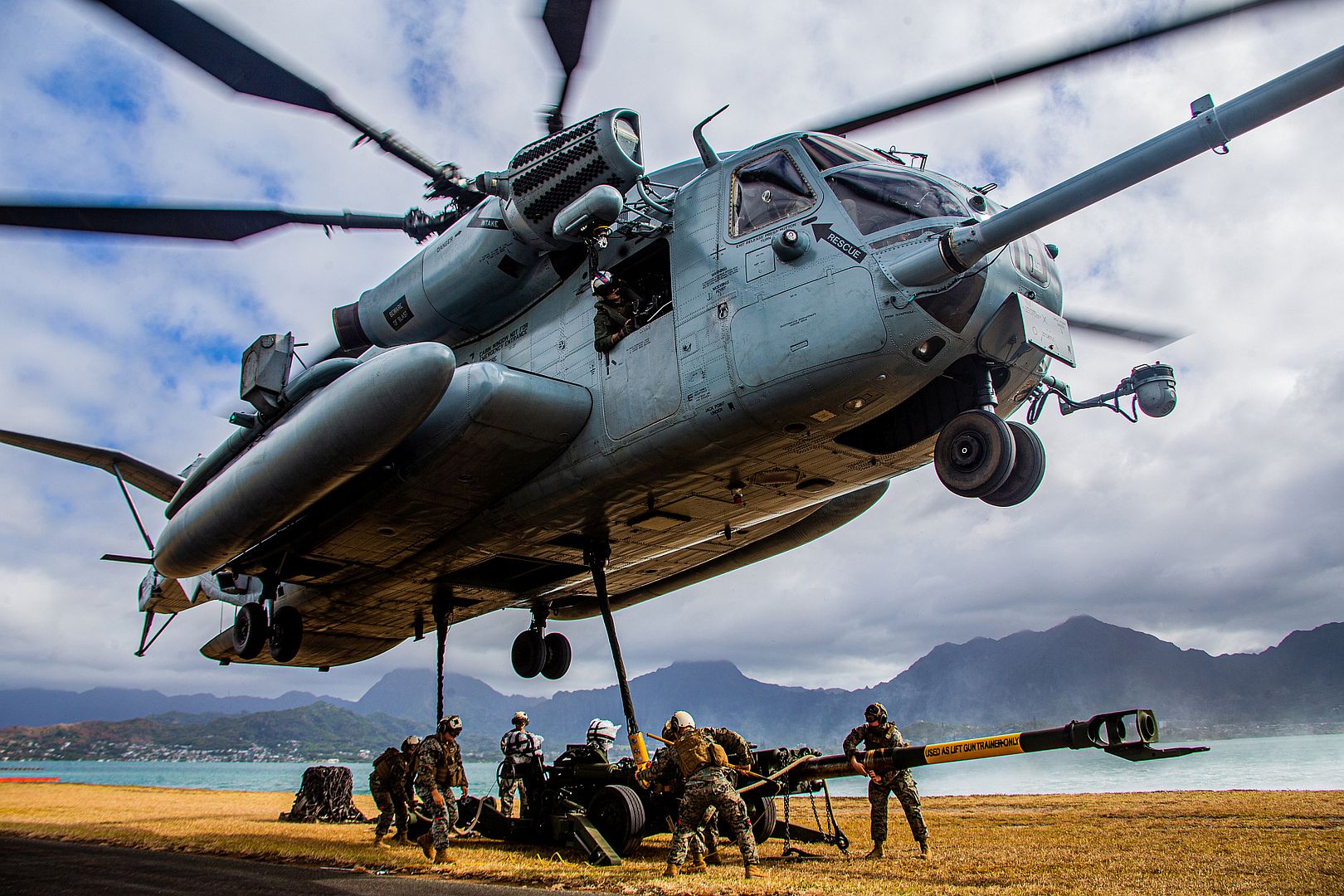
F-15E Strike Eagles assigned to the 494th Fighter Squadron conduct aerial operations over East Anglia in preparation for a missing-man formation in memory of 1st Lieutenant Kenneth Allen as he is transported home at Royal Air Force Mildenhall, England June 18, 2020. ?We are deeply saddened by the loss of Lt. Allen, and mourn with his family and his fellow Reapers in the 493rd Fighter Squadron,? said Col Will Marshall, 48th Fighter Wing commander. (U.S. Air Force photo/Master Sgt. Matthew Plew)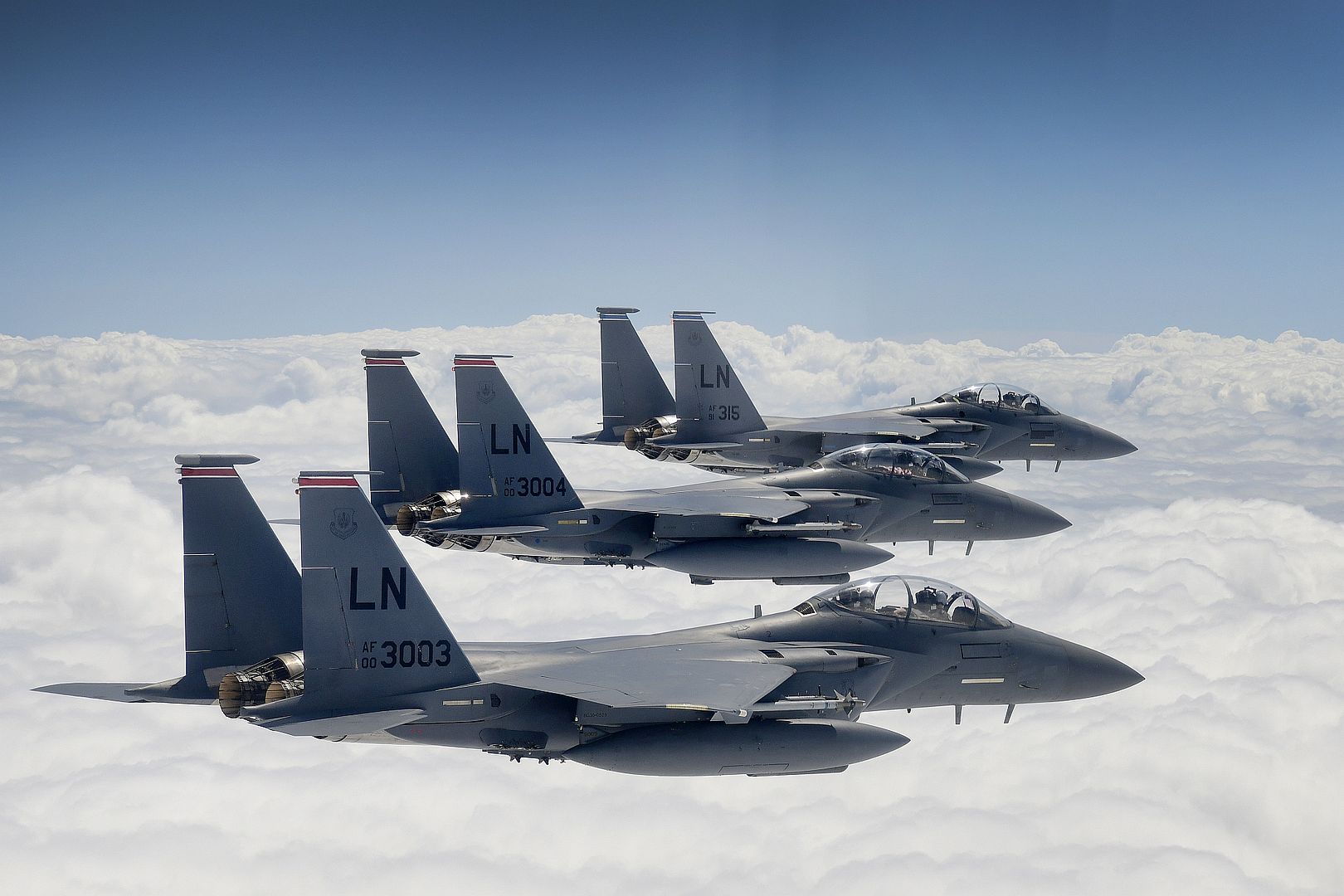
The 48th Fighter Wing flagship F-15C Eagle departs Royal Air Force Lakenheath, England, for depot maintenance at Robins Air Force Base, Ga., June 19, 2020. The name of 1st Lt. Kenneth Allen, a pilot recently killed when his F-15C crashed in the North Sea during a routine flying training, is painted on the jet to honor his final departure from the Liberty Wing. (U.S. Air Force photo's by Senior Airman Christopher S. Sparks)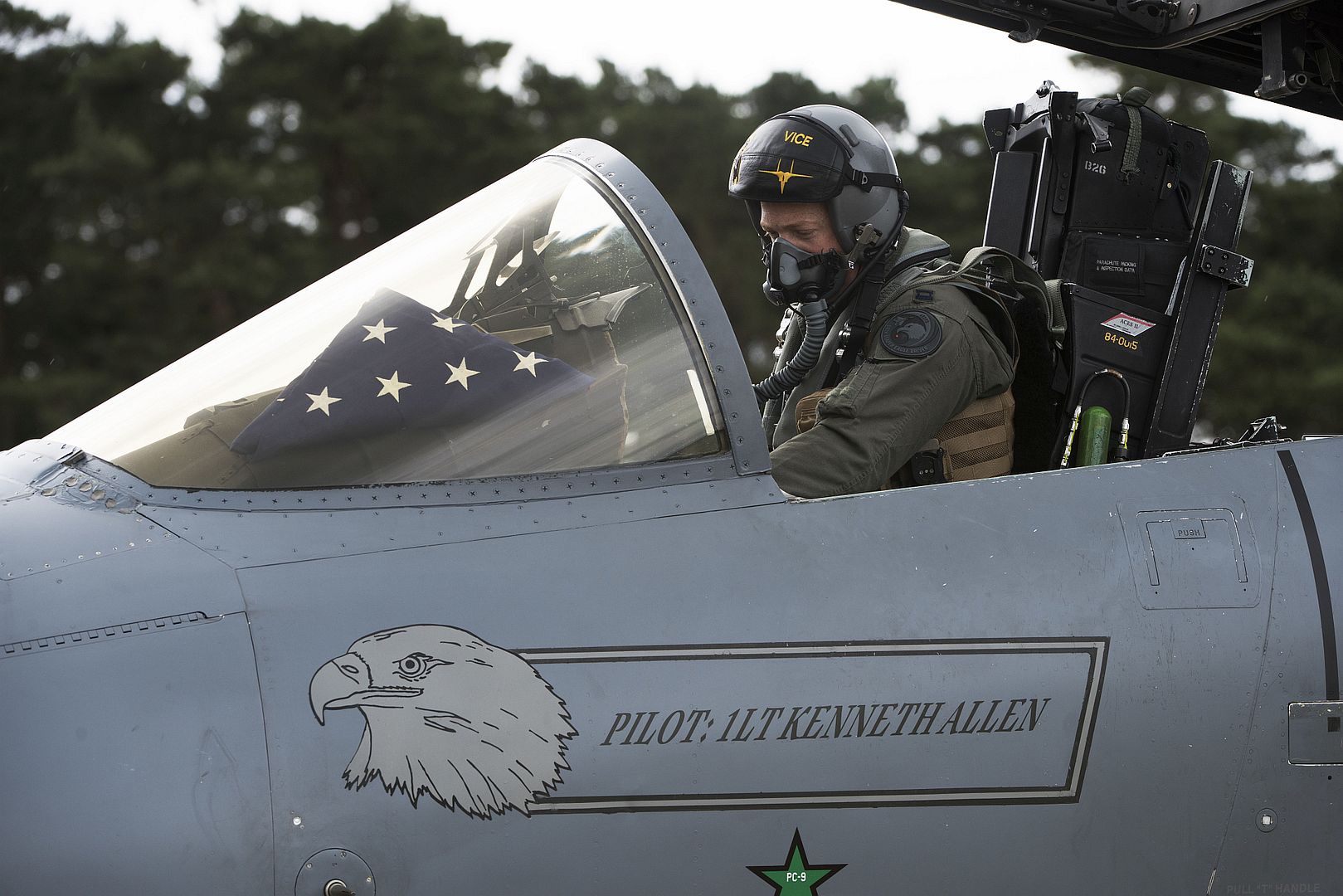
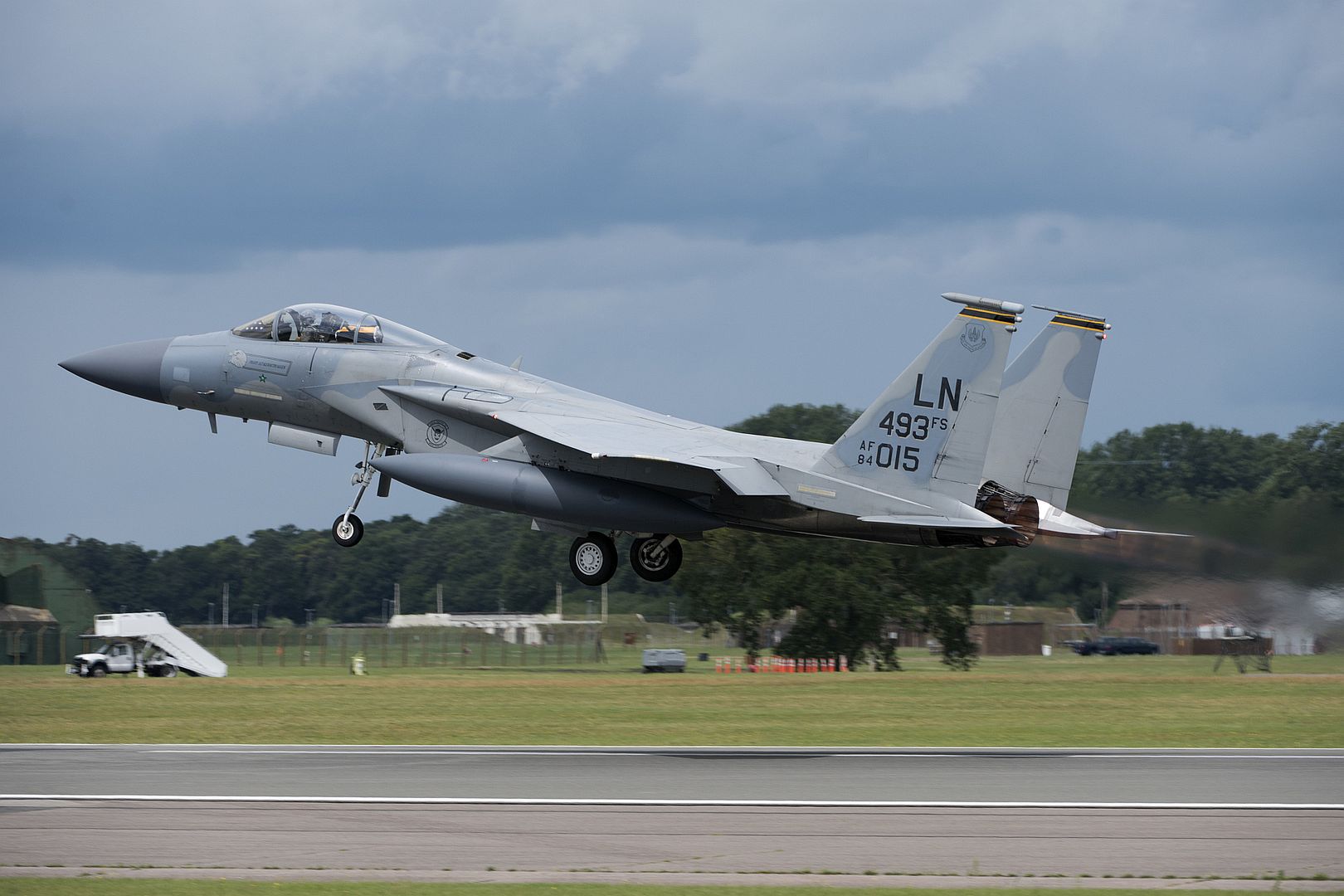
A B-2 Spirit assigned to the 509th Bomb Wing at Whiteman Air Force Base, Missouri, receives fuel from a KC-135 Stratotanker assigned to the 100th Air Refueling Wing at RAF Mildenhall, England, June 18, 2020. The aerial refueling was conducted as part of a strategic bomber mission north of the Arctic Circle. (U.S. Air Force photo by Airman 1st Class Joseph Barron)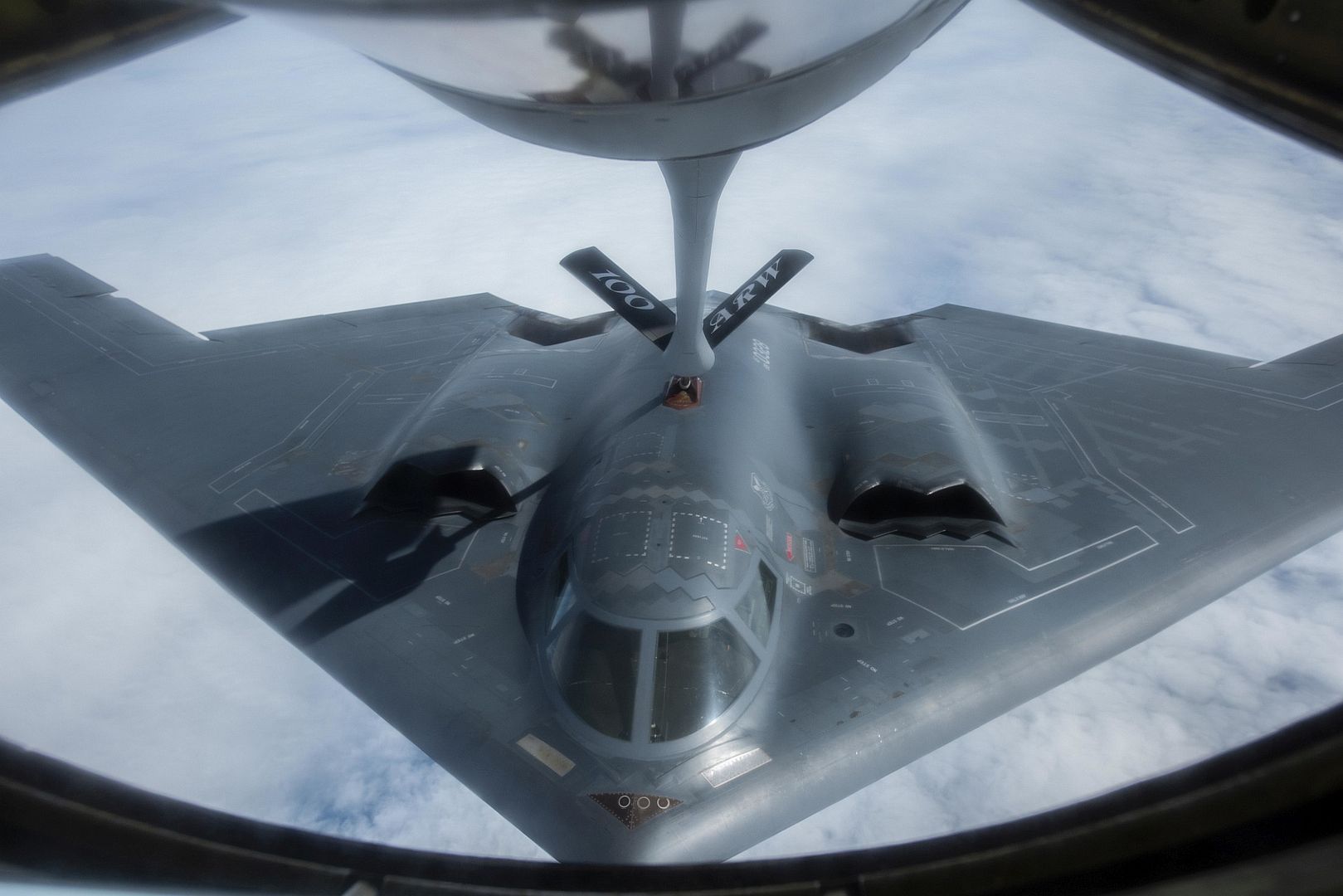
U.S. Air Force F-15E Strike Eagles assigned to the 48th Fighter Wing conduct bilateral interoperability training with Royal Netherland air Force F-16s over the North Sea June 19, 2020. Interoperability training remains a symbol of the shared commitment between The Netherlands, the U.S. and NATO to maintaining the continued security of Europe. (U.S. Air Force photo/ Airman 1st Class Anthony Clingerman)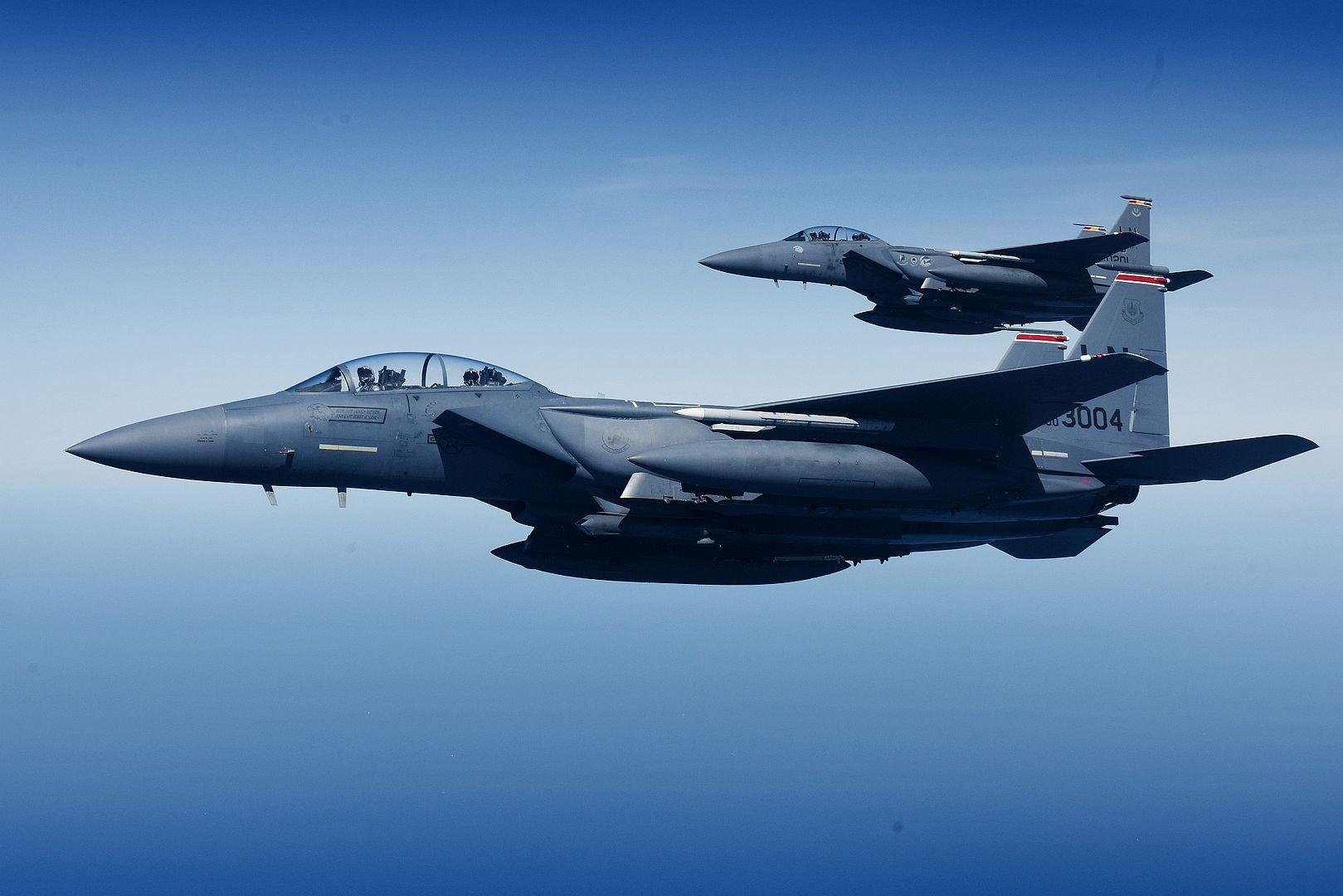
Royal Netherlands air force F-16s conduct bilateral interoperability training with U.S. Air Force F-15E Strike Eagles assigned to the 48th Fighter Wing over the North Sea June 19, 2020. Interoperability training remains a symbol of the shared commitment between The Netherlands, the U.S. and NATO to maintaining the continued security of Europe. (U.S. Air Force photo's/ Airman 1st Class Anthony Clingerman)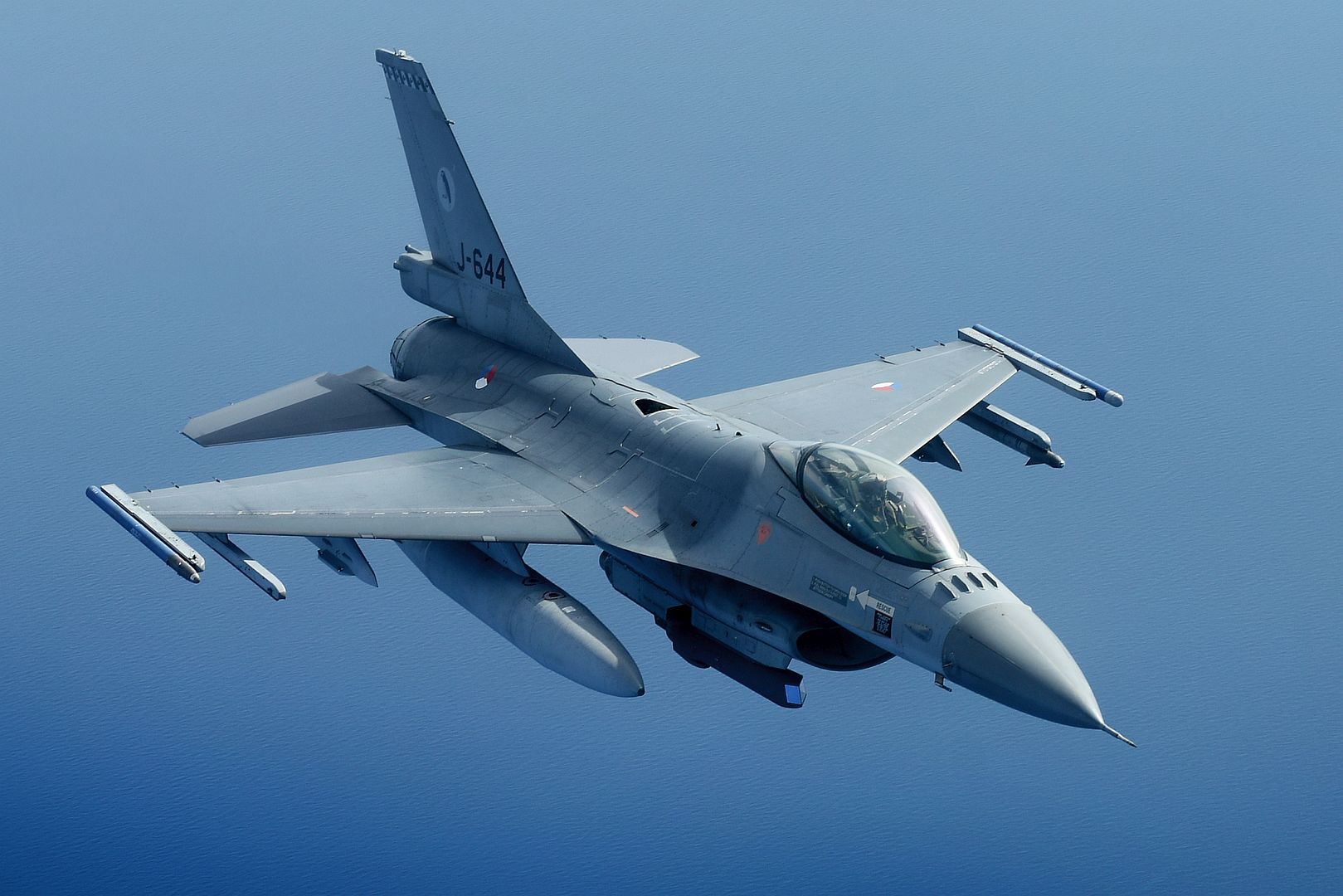
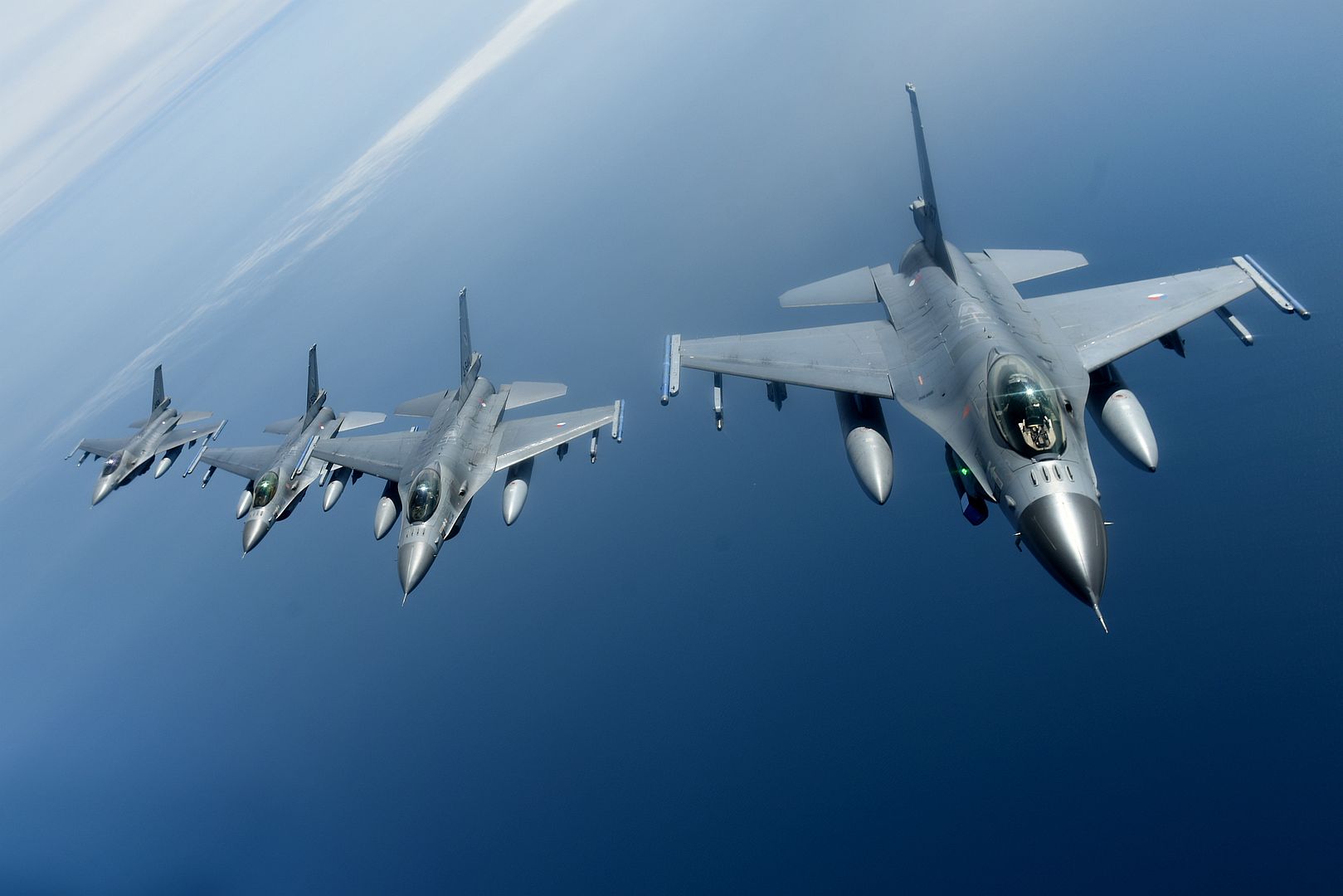
U.S. Air Force Maj. Josh Gunderson, F-22 Raptor Demonstration Team commander, performs during an aerial demonstration at Joint Base Langley-Eustis, Va., May 29, 2020. Maj. Gunderson has over 1,500 hours flying both the F-15 Eagle and F-22 Raptor and is in his first year as commander of the F-22 Raptor Demo Team. (U.S. Air Force photo by Lt. Sam Eckholm)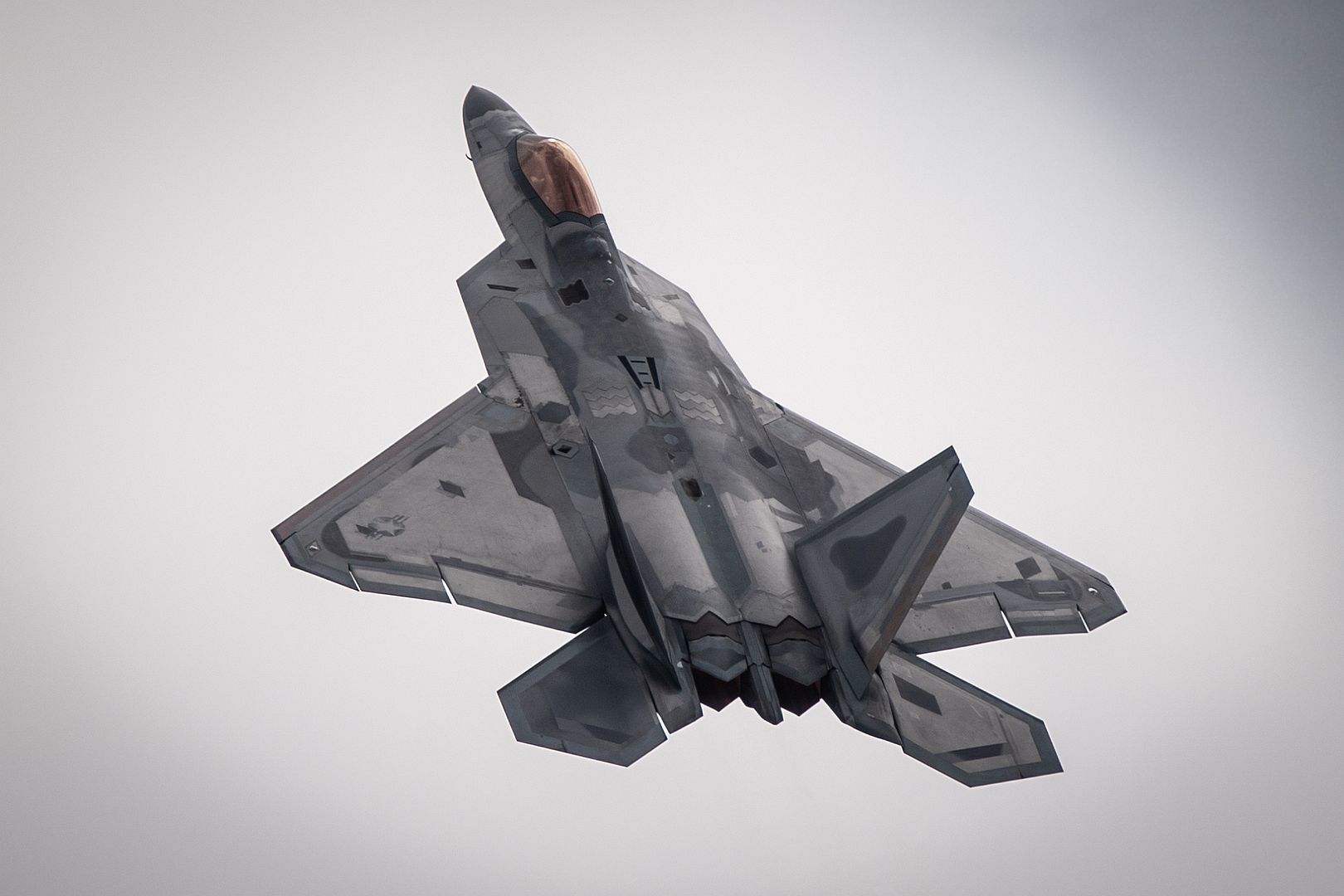
The Royal Air Force and Qatar Emiri Air Force (QEAF) Typhoon Squadron, known as No.12 Squadron, have marked an important milestone as they commenced flying as a Joint Squadron.
Based at RAF Coningsby, No.12 Squadron is a unique initiative between the UK and Qatar and will provide the QEAF with valuable experience operating the Typhoon as they prepare to receive their first aircraft. With deliveries commencing in 2022, the aircraft are part of a ?5.1 billion deal between BAE Systems and the Government of Qatar.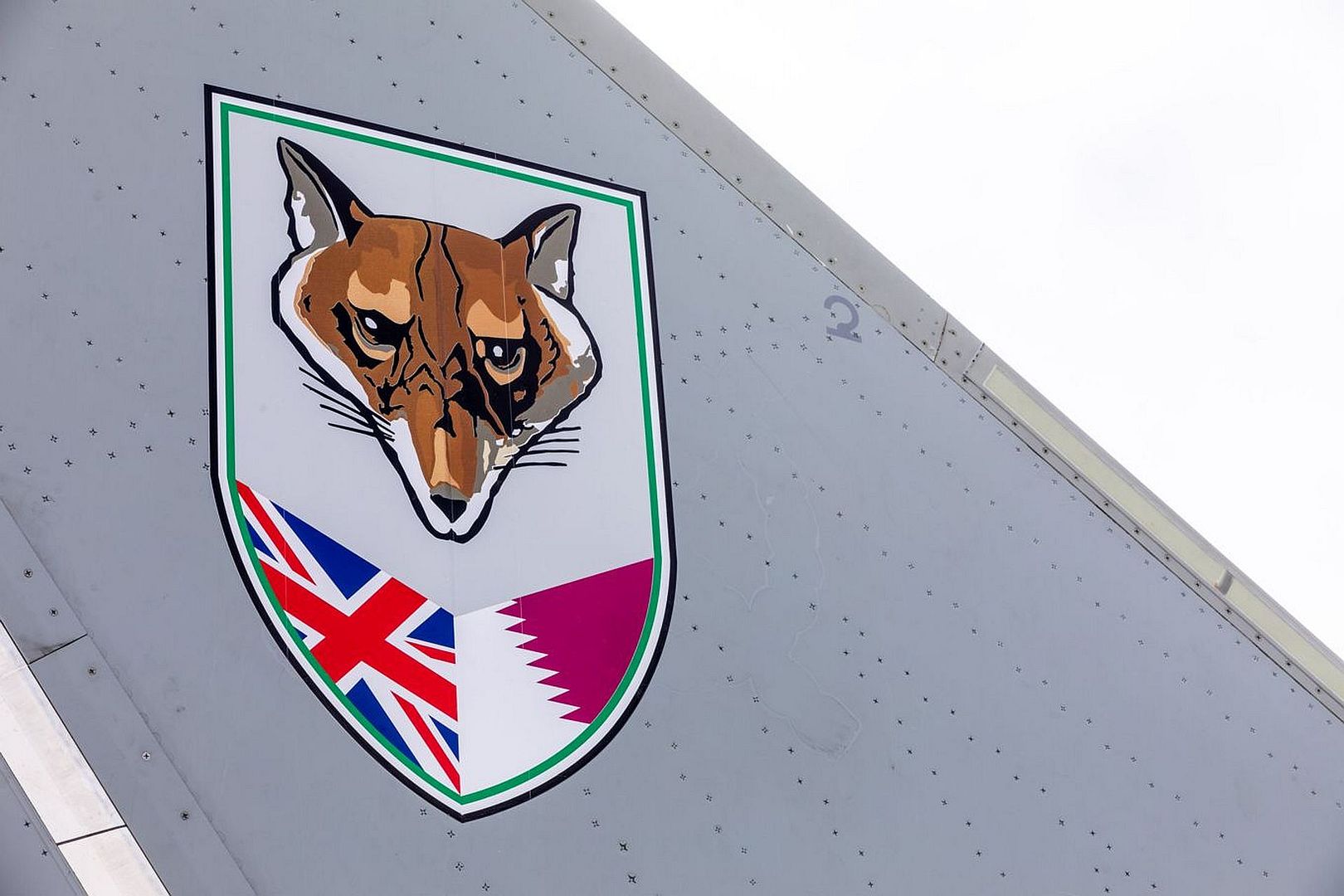
The flags of both nations were raised at RAF Coningsby this week as Typhoons with new Squadron markings flew for the first time, signalling the Squadron?s readiness to train pilots and ground crew from both air forces.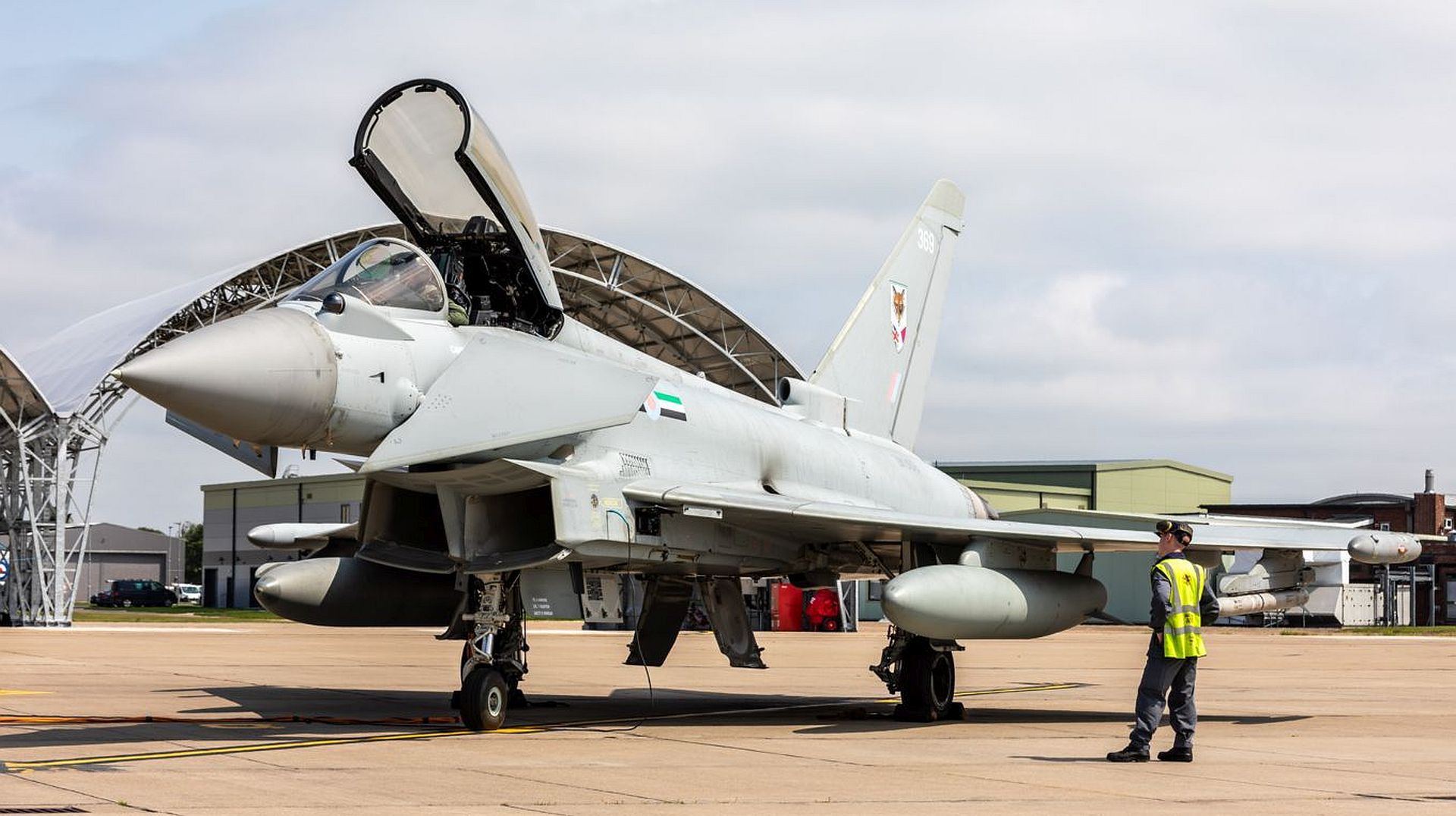
The UK has a long history of working with international partners in our Armed Forces, with such defence engagement recognised as key to strengthening partnerships and promoting our national interest. However, No. 12 Squadron is the first Joint Squadron in the RAF since the Second World War and Battle of Britain.
The Joint Squadron was stood up on 24 July 2018 and will drive closer collaboration between the RAF and QEAF, putting our bilateral security and defence relationship on a long-term and sustainable footing.
(photo's MOD)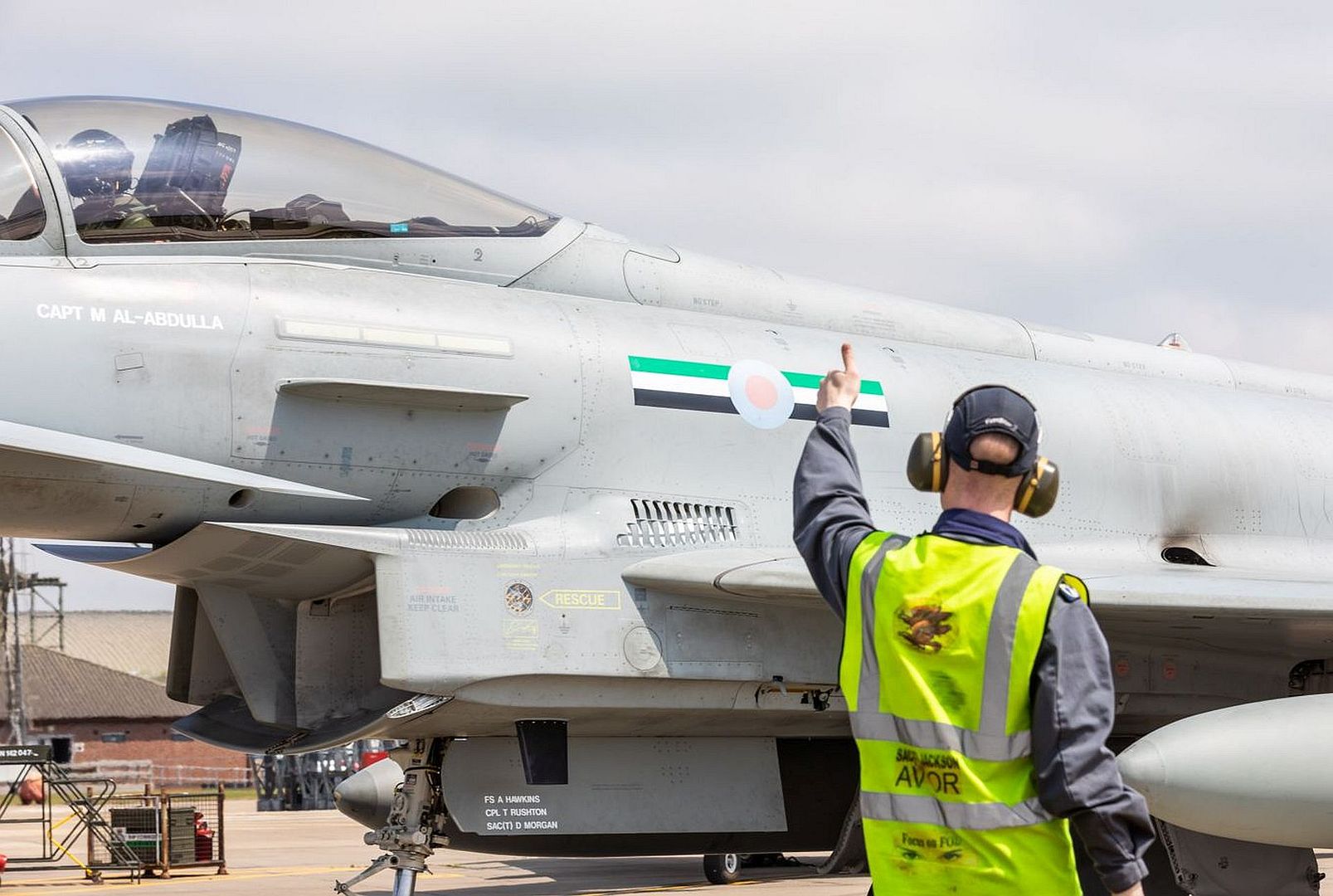
-
5 years agoMon Jun 22 2020, 10:10pm
 Main AdminPHILIPPINE SEA (June 21, 2020) An E/A-18G Growler, attached to the ?Shadowhawks? of Electronic Attack Squadron (VAQ) 141, prepares to land on the flight deck of the Navy?s only forward-deployed aircraft carrier, USS Ronald Reagan (CVN) 76, during flight operations. Ronald Reagan, the flagship of Carrier Strike Group 5, provides a combat-ready force that protects and defends the United States, as well as the collective maritime interests of its allies and partners in the Indo-Pacific region. (U.S. Navy photo by Mass Communication Specialist 3rd Class Erica Bechard)
Main AdminPHILIPPINE SEA (June 21, 2020) An E/A-18G Growler, attached to the ?Shadowhawks? of Electronic Attack Squadron (VAQ) 141, prepares to land on the flight deck of the Navy?s only forward-deployed aircraft carrier, USS Ronald Reagan (CVN) 76, during flight operations. Ronald Reagan, the flagship of Carrier Strike Group 5, provides a combat-ready force that protects and defends the United States, as well as the collective maritime interests of its allies and partners in the Indo-Pacific region. (U.S. Navy photo by Mass Communication Specialist 3rd Class Erica Bechard)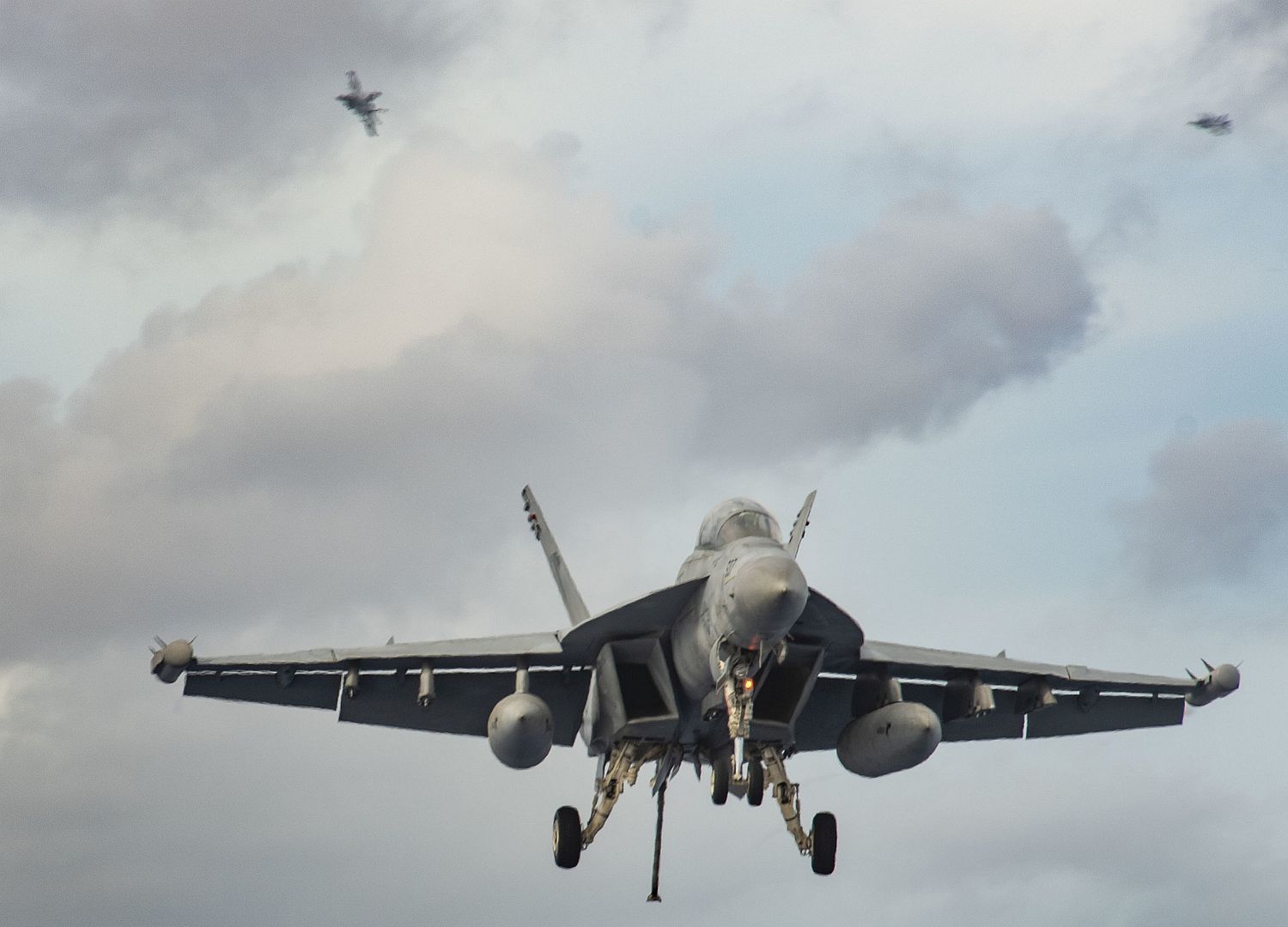
An F-15E Strike Eagle assigned to the 492nd Fighter Squadron flies over Royal Air Force Lakenheath, England, June 16, 2020. The 492nd FS conducts routine training to ensure the Liberty Wing is always ready to deliver air combat capabilities to the fight when called upon. (U.S. Air Force photo by Senior Airman Christopher S. Sparks)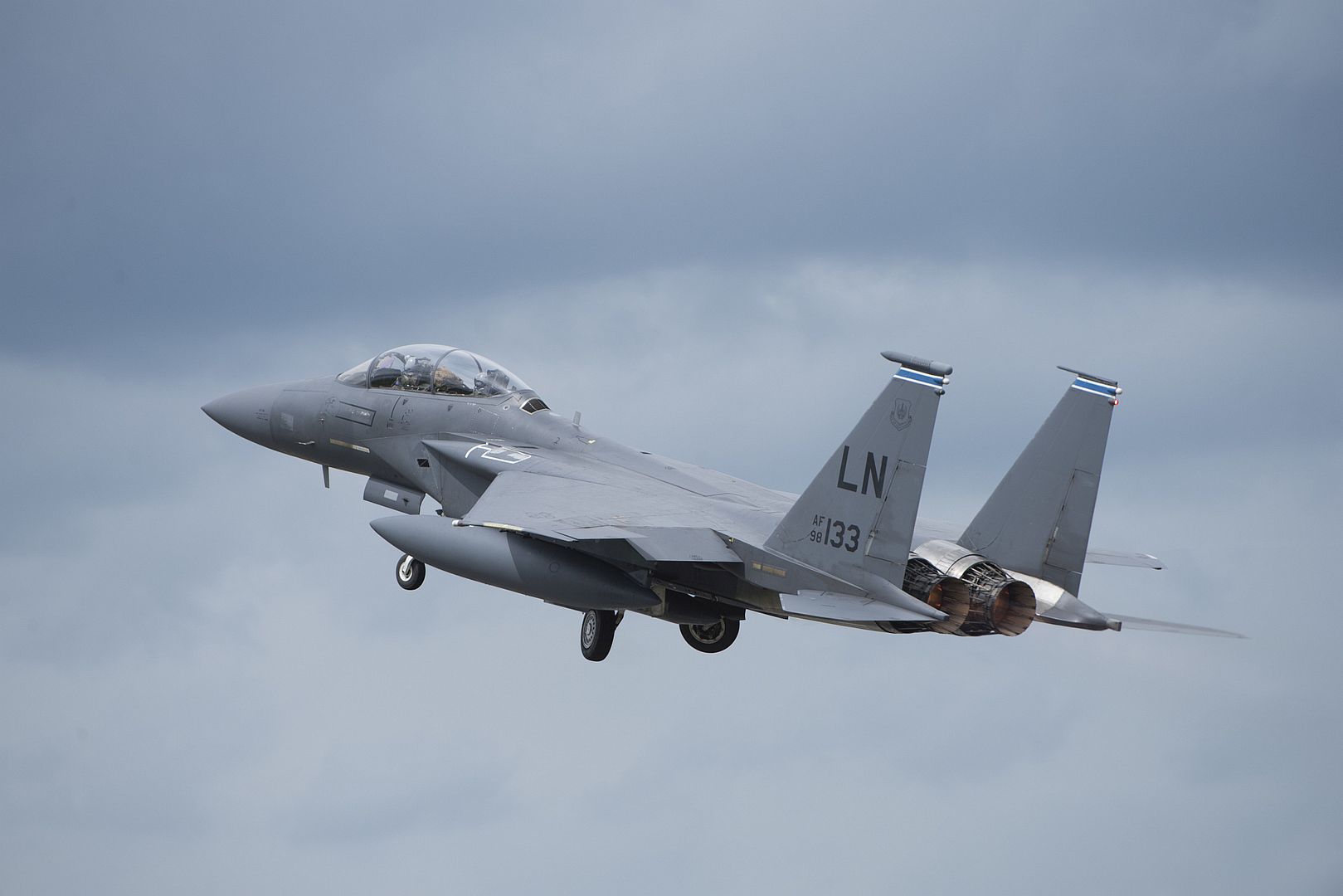
PHILIPPINE SEA (June 22, 2020) ? An F/A-18E Super Hornet, assigned to the ?Tomcatters? of Strike Fighter Squadron (VFA) 31, lands on the flight deck of the aircraft carrier USS Theodore Roosevelt (CVN 71) after participating in dual carrier operations with USS Nimitz (CVN 68) June 22, 2020. Dual carrier operations unify the tactical power of two individual carrier strike groups, providing fleet commanders with an unmatched, unified credible combat force capable of operating indefinitely. The Nimitz and Theodore Roosevelt carrier strike groups are on scheduled deployments to the Indo-Pacific. (U.S. Navy photo by Mass Communication Specialist Seaman Alexander Williams)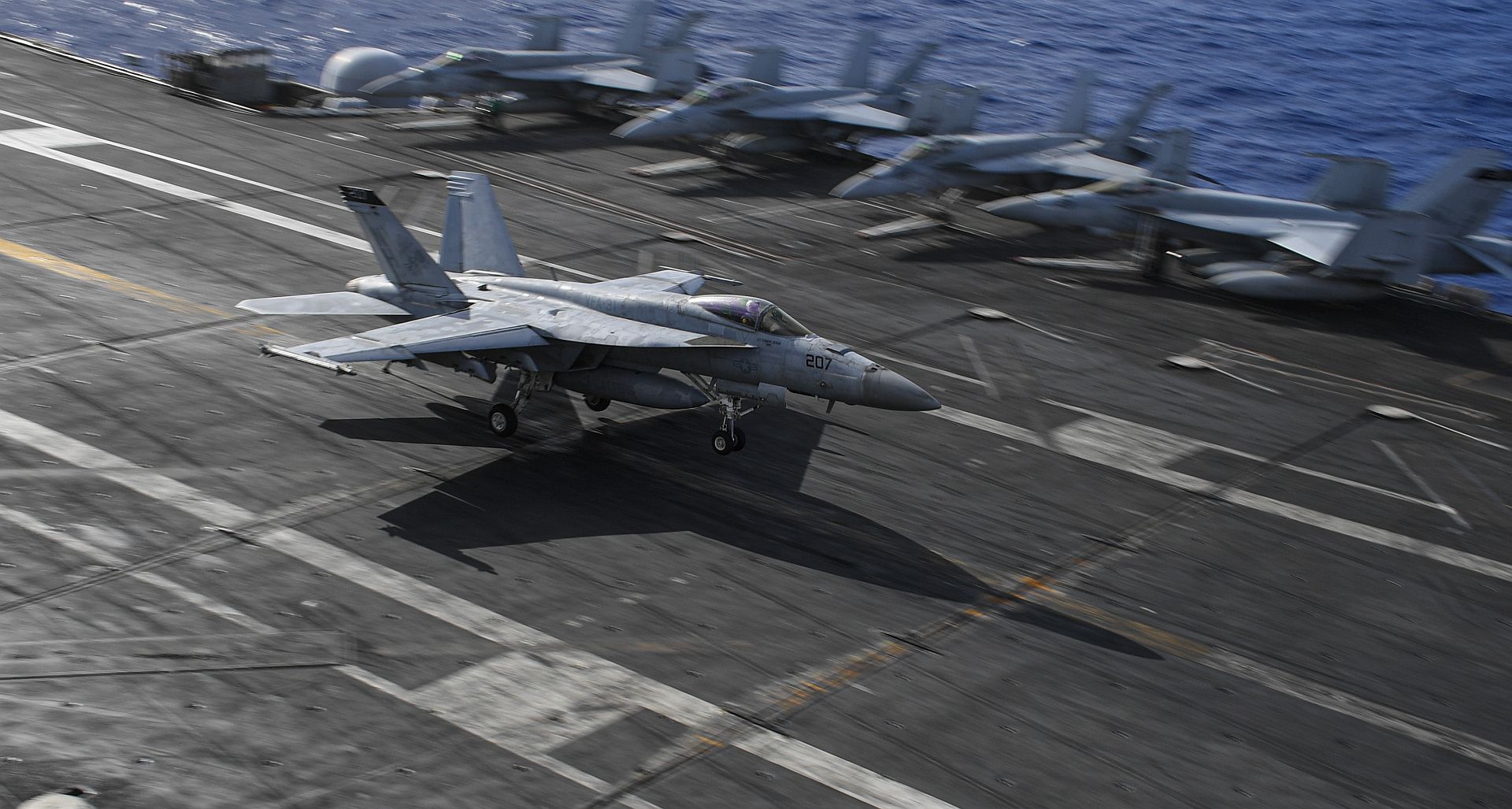
An F-35A releases ordnance during a dual capable aircraft (DCA) test flight in the skies above Edwards Air Force Base, California. The development and testing of equipment for F-35A nuclear capability is known as making an aircraft "dual-capable," or being able to deliver both conventional and nuclear weapons. The iconic nuclear fighter role, performed in the past by the F-15E and F-16, is being passed to the F-35A to play a future role in national security. The F-35 is the premier multi-mission, 5th generation weapon system. Its ability to collect, analyze and share data is a force multiplier that enhances all assets in the battle-space: with stealth technology, advanced sensors, weapons capacity and range, the F-35 is the most lethal, survivable, and interoperable fighter aircraft ever built.
(Courtesy photo's)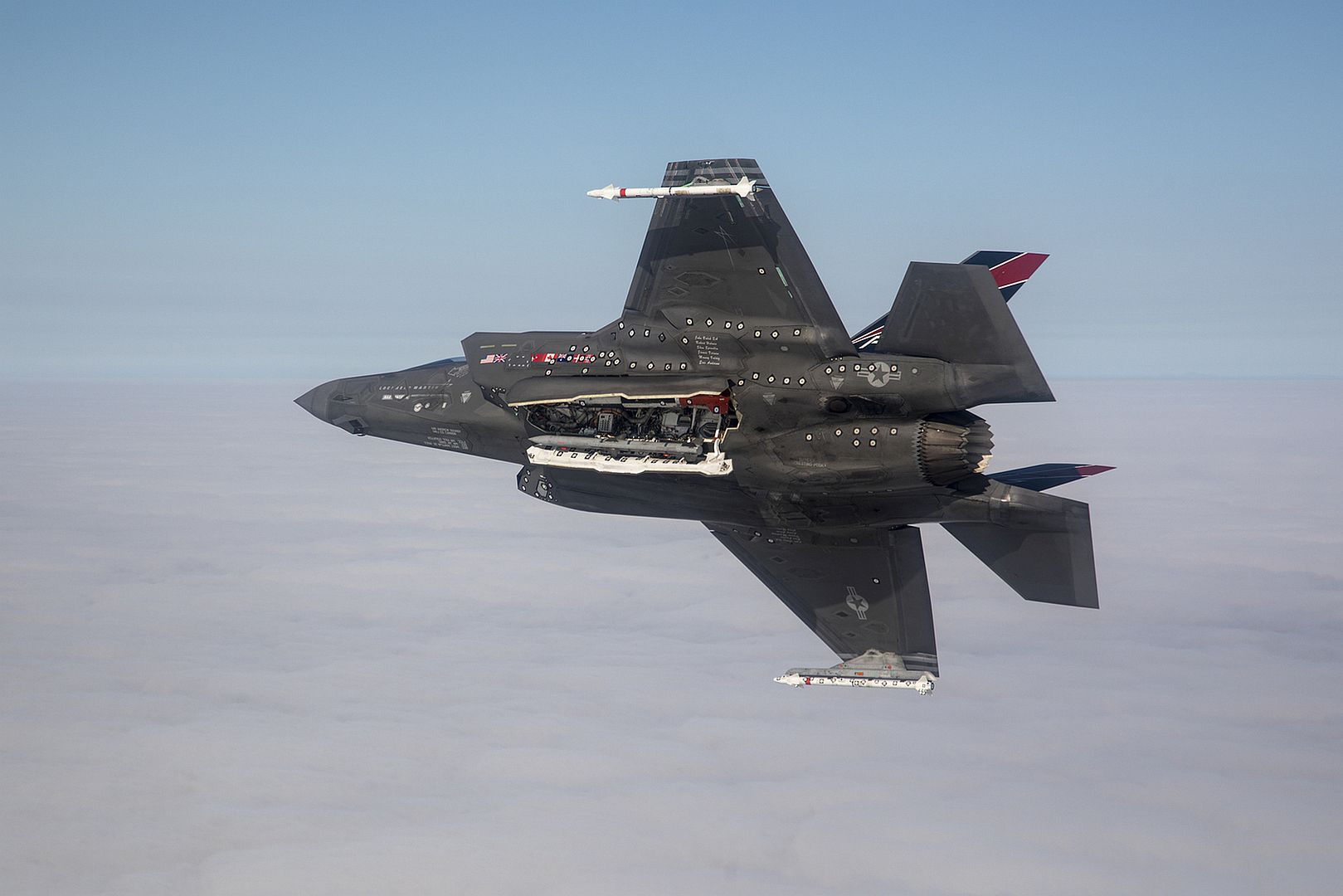
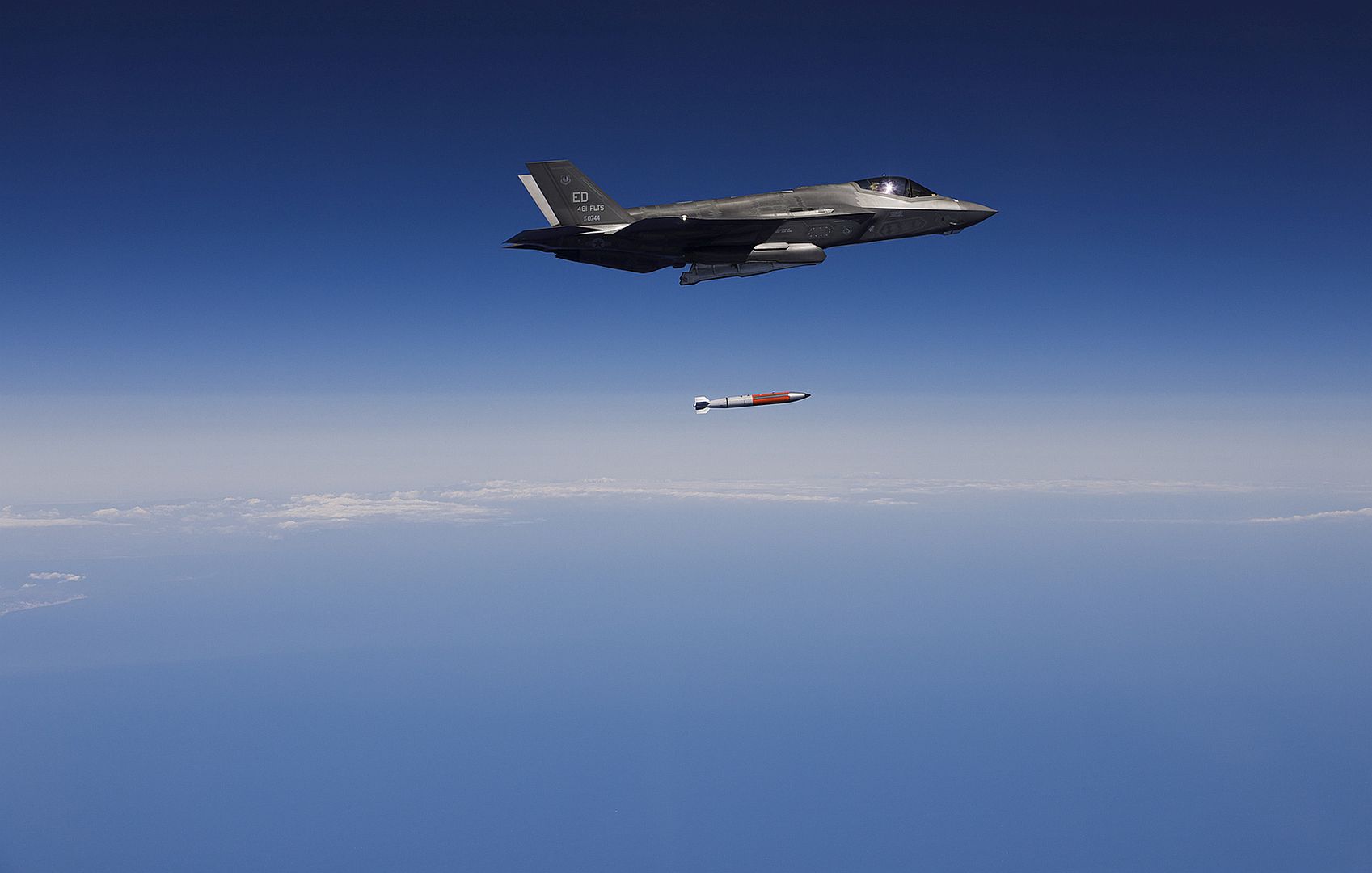
ARABIAN SEA (June 20, 2020) An F/A-18E Super Hornet, attached to the "Wildcats" of Strike Fighter Squadron 131, aboard the aircraft carrier USS Dwight D. Eisenhower (CVN 69), June 20, 2020. Ike is deployed to the U.S. 5th Fleet area of operations in support of naval operations to ensure maritime stability and security in the Central Region, connecting the Mediterranean Sea and Pacific Ocean through the western Indian Ocean and three critical chokepoints to the free flow of global commerce. (U.S. Navy photo by Mass Communication Specialist 3rd Class Kody A. Phillips/Released)
Donauw?rth, 19 June 2020 ? Airbus Helicopters? five-bladed H145 has been certified by the European Union Aviation Safety Agency (EASA), clearing the way for customer deliveries towards the end of summer 2020. The certification covers the full range of capabilities, including single-pilot and instrument flight rules (IFR) and single engine operations (Cat.A/VTOL), along with night vision goggles capability.
?Our new five bladed H145 is an excellent example of our quest for continuous improvement and providing incremental innovation that responds to our customers' requirements", said Bruno Even, Airbus Helicopters CEO. ?This helicopter combines value-added features with the robustness and the reliability of a tried-and-tested bestseller, making it very competitive in the light twin-engine market.?
The new version of Airbus? best-selling H145 light twin-engine helicopter was unveiled at Heli-Expo 2019 in Atlanta, GA, with launch customers announced for almost every market segment. Prior to the successful high-altitude test campaign in South America, where the aircraft set its skids down on the Aconcagua, the highest mountain in the Southern hemisphere, the new H145 performed several test campaigns including in Spain at medium altitudes and Finland for cold weather.
This latest upgrade of the H145 family adds a new, innovative five-bladed rotor to the multi-mission H145, increasing the useful load of the helicopter by 150 kg (330 lb). The simplicity of the new bearingless main rotor design will also ease maintenance operations, further improving the benchmark serviceability and reliability of the H145, while improving ride comfort for both passengers and crew. Certification by the Federal Aviation Administration will follow later this year. The certification for the military version of the five-bladed H145 will be granted in 2021.
Powered by two Safran Arriel 2E engines, the H145 is equipped with full authority digital engine control (FADEC) and the Helionix digital avionics suite. It includes a high performance 4-axis autopilot, increasing safety and reducing pilot workload. Its particularly low acoustic footprint makes the H145 the quietest helicopter in its class.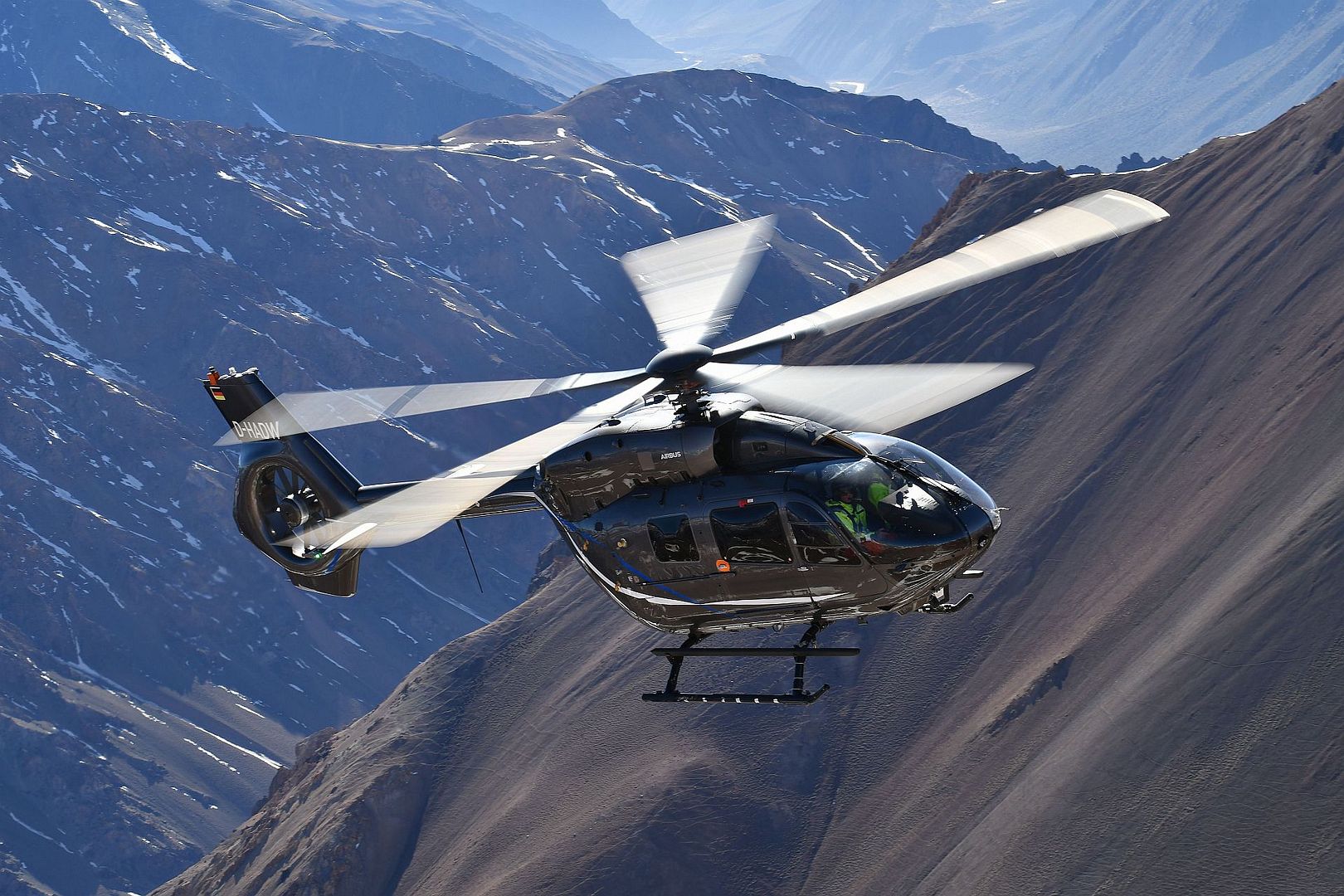
-
5 years agoTue Jun 23 2020, 09:29pm
 Main AdminMISAWA AIR BASE, Japan (AFNS) --
Main AdminMISAWA AIR BASE, Japan (AFNS) --
Members of the 35th Fighter Wing completed a readiness exercise designed to validate the wing?s ability to rapidly generate combat airpower at Misawa Air Base, June 23. The exercise culminated in a joint and bilateral ?elephant walk? formation composed of 31 aircraft, demonstrating large-scale combat airpower local to Misawa AB.
?The goal of this exercise was to execute a short notice, agile combat execution-style deployment and generation,? said Maj. Brannan Studley, 35th Fighter Wing director of wing inspections. ?We learned a lot, refined our training, and demonstrated we?re ready to fight, which is even more critical in the middle of COVID-19 operations.? This exercise and demonstration touched on all five of the Air Force core missions: Air and Space Superiority, Global Strike, Intelligence, Surveillance, and Reconnaissance, Rapid Global Mobility, and Command and Control.
After the conclusion of the generation portion of the exercise, 12 newly-configured F-16CM Fighting Falcons took to the runway, along with 12 Koku-Jieitai (Japan Air Self-Defense Force) F-35A Lightning II Joint Strike Fighters, two U.S. Navy EA-18G Growlers, a USN C-12 Huron, two U.S. Air Force MC-130J Commando II aircraft from Kadena AB, a USN P-8 Poseidon, and a Koku-Jieitai CH-47 Chinook.
with the exception of the MC-130Js, the rest of the aircraft that participated are assigned to Misawa AB.
?Seeing our forces and our partners and allies taxi to the runway in one formation, as one fighting force, really brought home my last two years of command,? said Col. Kristopher Struve, 35th Fighter Wing commander. ?I?m grateful to our Navy counterparts and Koku-Jieitai allies for their continued efforts in enhancing our interoperability and continuing to improve on our collective capabilities. Misawa Air Base would not be the combat-ready force it is without them.
This demonstration took the work of many agencies and individuals across the base, and the 35th Fighter Wing is grateful to our partners for showcasing the amazing, combat-ready force available to our Indo-Pacific leaders if called upon during a crisis.?
SAN DIEGO (June 22, 2020)
The first CMV-22B Osprey assigned to Fleet Logistics Multi-Mission Squadron (VRM) 30 lands at Naval Air Station North Island. VRM 30 was established in late 2018 to begin the Navy?s transition from the C-2A Greyhound, which has provided logistics support to aircraft carriers for four decades, to the CMV-22B, which has an increased operational range, greater cargo capacity, faster cargo loading/unloading, increased survivability and enhanced beyond-line-of-sight communications compared to the C-2A. U.S. Navy photo's by Mass Communication Specialist 2nd Class Chelsea D. Meiller (Released)

A United States Navy E/A-18G Growler from Electronic Attack Squadron 209, the ?Star Warriors,? flies with a B-52H Stratofortress deployed from Barksdale Air Force Base, La., over the Sea of Japan while conducting a Bomber Task Force mission June 16, 2020. U.S. Strategic Command operations and engagements with U.S. allies and partners demonstrate and strengthen a shared commitment to global security and stability. (Courtesy photo)
A B-52H Stratofortress deployed from Barksdale Air Force Base, La., taxis down the flightline at Eielson Air Force Base, Alaska, after conducting a Bomber Task Force mission over the Sea of Japan, June 17, 2020. Bomber Task Force missions help maintain global stability and security while enabling units to become familiar with operations in different regions. (U.S. Air Force photo by Senior Airman Lillian Miller)
PHILIPPINE SEA (June 23, 2020) The Arleigh Burke-class guided-missile destroyers USS Sterett (DDG 104), USS Russell (DDG 59) and the Ticonderoga-class guided-missile cruiser USS Bunker Hill (CG 52) are underway in formation with the aircraft carrier USS Nimitz (CVN 68) during dual carrier operations with the Nimitz and Theodore Roosevelt Carrier Strike Groups (CSG). Dual carrier operations unify the tactical power of two individual CSGs, providing fleet commanders with an unmatched, unified credible combat force capable of operating indefinitely. The Nimitz and Theodore Roosevelt CSGs are on scheduled deployments to the Indo-Pacific. (U.S. Navy photo by Mass Communication Specialist 3rd Class Dalton Reidhead/Released) -
5 years agoThu Jun 25 2020, 12:13am
 Main AdminPresident Donald J. Trump departs from a flight aboard Marine Corps Air Station (MCAS) Yuma as part of a visit to the border wall on June 23, 2020. (U.S. Marine Corps photo's by LCpl Gabrielle Sanders)
Main AdminPresident Donald J. Trump departs from a flight aboard Marine Corps Air Station (MCAS) Yuma as part of a visit to the border wall on June 23, 2020. (U.S. Marine Corps photo's by LCpl Gabrielle Sanders)

MEDITERRANEAN SEA (June 24, 2020) - An Italian SH101-A helicopter and a a French Alouette helicopter participate in joint flight operations on the flight deck of the Wasp-class amphibious assault ship USS Bataan (LHD 5) as part of a maritime training exercise, June 24, 2020. Bataan is conducting operations in U.S. 6th Fleet in support of regional allies and partners, and U.S. national security interests in Europe and Africa. (U.S. Navy photo by Mass Communication Specialist Seaman Apprentice Darren Newell/Released)
Lt. Col. Eugene Georgescu, 5th Reconnaissance Squadron commander and U-2 command pilot, descends for a landing at Osan Air Base, Republic of Korea, June 17, 2020. This flight solidifies Georgescu?s 2,000 flying hours spent with the U-2 since 2013. (U.S. Air Force photo by Staff Sgt. Benjamin Bugenig)
NAVAL BASE GUAM (June 24, 2020) The aircraft carrier USS Nimitz (CVN 68) pulls into the island of Guam. Nimitz is currently on a scheduled deployment. (U.S. Navy photo by Mass Communication Specialist 3rd Class Dalton Reidhead/Released)
24.06.2020
The parade, dedicated to the 75th anniversary of the Victory of the Soviet people in the Great Patriotic war, was held at the Russian air base Hmeimim in Syria, attended by more than a thousand military personnel.
More than a thousand Russian and Syrian servicemen took part in the parade dedicated to the 75th anniversary of the Victory in the Great Patriotic war on the territory of the Russian air base Hmeymim in Syria. Military personnel in historical uniforms of the Second World War, command officers and military personnel of the Russian group of troops, a mixed aviation regiment, a special medical unit, a military police unit, a military band and a combined parade crew of female soldiers marched on foot. Syria was represented by special forces of the Syrian army and air force, as well as the special forces assault regiment "Commandos" and representatives of the Naval Academy of the Armed Forces of the country.
The mechanized column at the parade was represented by the armored cars "Tiger-M" and "Typhoon", BTR-80 and BTR-82A armored personnel carriers, antiaircraft missile - gun systems "Pantsir" and SRBM "Iskander-M", and military equipment of Syrian Land Forces units, 52 pieces in total. The air part of the parade involved 17 aircraft-Mi-8ATMSh, Mi-35, SA-342 "Gazelle" helicopters, fighter aircraft Su-24, Su-34, Su-35 and transport aviation An-30 and An-72 military transport aircraft, as well as A-50 long-range radar detection aircraft.
The parade was attended by Alexander Efimov Ambassador Extraordinary and Plenipotentiary of the Russian Federation to the Syrian Arab Republic, General Ali Abdul Ayub Minister of Defence of Syria, Mansour Azam Minister of Presidential Affairs of the Syrian Arab Republic, General Yasser al-Haffa Commander of the Syrian Navy, as well as the governors of Latakia and Tartus provinces, Khadur al-Salem and Safwan Abusada.
SIGONELLA AIR BASE, SIGONELLA, Italy. ? June 24, 2020 ? The NATO Alliance Ground Surveillance Force (NAGSF), with support from Northrop Grumman Corporation (NYSE: NOC), marked a significant milestone recently in the System Level Performance Verification with the completion of a nine-hour training and test flight conducted for the first time under control of NAGSF trained pilots.
?Northrop Grumman is proud to support NAGSF pilots training as they control flights with number one NATO RQ-4D Phoenix,? said Jane Bishop, vice president and general manager, autonomous systems, Northrop Grumman. ?We remain committed in our relationship to NATO and the mission to protect and defend global security.?
The NATO AGS RQ-4D aircraft is based on the U.S. Air Force wide area surveillance Global Hawk. It has been uniquely adapted to NATO requirements and will provide NATO state-of-the-art intelligence, surveillance and reconnaissance capability. This includes protecting ground troops, civilian populations and international borders in peacetime, times of conflict and for humanitarian missions during natural disasters.
Northrop Grumman solves the toughest problems in space, aeronautics, defense and cyberspace to meet the ever evolving needs of our customers worldwide. Our 90,000 employees define possible every day using science, technology and engineering to create and deliver advanced systems, products and services.
Tokyo, 24 June 2020 ? Japan?s National Police Agency (NPA) has ordered one new H225 and four H135 helicopters as part of its fleet modernisation programme.
Currently operating 12 H135, four H155 and six AS365 helicopters, with one H215 and two H225 already on order, NPA deploys its growing fleet for missions including law enforcement, personnel and VIP transport, goods transportation, disaster relief, as well as wide area support. The five new helicopters will complement the agency?s law enforcement capabilities. The new order will take NPA?s Airbus fleet to 30.
?Airbus Helicopters treasures the opportunity to support Japan?s wide-ranging law enforcement missions for more than 30 years with our light twin, medium and heavy-lift helicopters. We thank NPA for its continued trust built over the years, and welcome the agency as a new customer for our Super Puma helicopters. With an enlarged fleet not just in numbers, but also in range and capacity, we are fully confident that the new helicopters will be a timely addition, reinforcing the agency?s operations,? said Guillaume Leprince, Managing Director of Airbus Helicopters Japan.
The H135 is an outstanding market leader in the light twin-engine helicopter segment, known for its compact build, agility, reliability and versatility. Its high availability is a strong trait for law enforcement missions. In Japan, H135 operators benefit from the training support offered by Airbus Helicopters? Kobe-based H135 full flight simulator centre. There are currently 94 H135 helicopters operating in Japan today. Globally, Airbus has delivered more than 1,375 H135s to about 300 customers, clocking in over 5.4 million flight hours.
Offering the industry?s best range, speed, payload and reliability in an 11-ton-category twin-turbine rotorcraft, the H225 is the latest member of Airbus Helicopters? Super Puma family that has accumulated more than 5.7 million flight hours in all-weather conditions around the world. H225 offers outstanding endurance and fast cruise speed, and can be fitted with various equipment to suit a variety of roles. In Japan alone, a total of 28 helicopters from the Super Puma family are currently flown by civil, parapublic operators, and Japan?s Ministry of Defense for various search and rescue missions, VIP, fire-fighting, and heavy-lifting.
24 June 2020
The next stage of redevelopment at RAF Lossiemouth has marked a big step forward with a ?20-million investment in facilities for the Station?s newest Typhoon Squadron.
The Defence Infrastructure Organisation (DIO) has awarded a contract worth ?20-million to Galliford Try for work which will house No. IX (Bomber) Squadron in facilities which will enable them to deliver in their role as a Typhoon Aggressor Squadron.
The work, which will start later this summer and is expected to take around two years, will see the refurbishment of an existing hangar and construction of new technical and storage facilities. It forms part of a wider redevelopment of RAF Lossiemouth which also includes a refurbished runway, facilities for the RAF?s fleet of Poseidon MRA Mk1 sub-hunters, new and improved accommodation, and much more.
RAF Lossiemouth is now home to four Squadrons of Typhoons which hold the Quick Reaction Alert role, securing the skies of the UK every minute of every day. Aircraft could be launched at a moment?s notice to intercept unidentified aircraft, or aircraft which may pose a threat. RAF Lossiemouth covers the north of the UK including Scotland, while RAF Coningsby covers the south. The Typhoon is an extremely versatile multi-role combat aircraft involved in operations around the world, including Lithuania where 6 Squadron from RAF Lossiemouth are deployed on NATO Baltic Air Policing.
Once fully established in their new facilities, IX(B) Squadron will be the RAF?s dedicated fourth-generation Aggressors. This involves simulating the tactics, threats, and procedures of our adversaries to create the best training environment for Royal Air Force pilots. While providing this essential training, the squadron will also be involved in Quick Reaction Alert duties.
-
 Main AdminMEDITERRANEAN SEA (June 24, 2020) A French Alouette III helicopter prepares to land aboard the amphibious assault ship USS Bataan (LHD 5) during deck landing qualifications June 24, 2020. The Bataan is conducting operations in U.S. 6th Fleet in support of regional allies and partners, and U.S. national security interest in Europe and Africa. (U.S. Marine Corps photo by Cpl. Tanner Seims/Released)
Main AdminMEDITERRANEAN SEA (June 24, 2020) A French Alouette III helicopter prepares to land aboard the amphibious assault ship USS Bataan (LHD 5) during deck landing qualifications June 24, 2020. The Bataan is conducting operations in U.S. 6th Fleet in support of regional allies and partners, and U.S. national security interest in Europe and Africa. (U.S. Marine Corps photo by Cpl. Tanner Seims/Released)
Marines with Marine Medium Tiltrotor Squadron 266 and Marine Aerial Refueler Transport Squadron 452 prepare to conduct an aerial refueling during VMM-266?s deployment for training at Alpena Combat Readiness Training Center, Michigan, June 23, 2020. VMGR-452 supported VMM-266 with aerial refueling missions during their exercise to increase interoperability and efficiency amongst the units. (U.S. Marine Corps photo's by Lance Cpl. Elias E. Pimentel III)

A U.S. Air Force F-16 Fighting Falcon from the 510th Fighter Squadron ascends at Aviano Air Base, Italy, June 25, 2020. The F-16 is able to fly more than 500 miles, deliver its weapons with superior accuracy, defend itself against enemy aircraft, and return to its starting point. (U.S. Air Force photo by Airman 1st Class Thomas S. Keisler IV)
A U.S. Air Force F-16 Fighting Falcon from the 31st Operations Group flies at Aviano Air Base, Italy, June 25, 2020. The unit provides combat airpower on demand to U.S. and NATO Combatant Commanders as well as the National Command Authority in order to meet National Security objectives. (U.S. Air Force photo by Airman 1st Class Thomas S. Keisler IV)
MEDITERRANEAN SEA (June 24, 2020) - An Italian SH101-A helicopter prepares to land on the flight deck of the Wasp-class amphibious assault ship USS Bataan (LHD 5) as part of a maritime training exercise, June 24, 2020. Bataan is conducting operations in the U.S. 6th Fleet in support of regional allies and partners, and U.S. national security interests in Europe and Africa. (U.S. Navy photo by Mass Communication Specialist 2nd Class Angus Beckles/Released)
ARLINGTON, Va., June 25, 2020 ? Morocco is the 17th country to acquire the Boeing AH-64 Apache through a contract for 24 of the helicopters that was recently signed.
Boeing has delivered nearly 2,500 Apache helicopters to 16 nations to date, including the U.S., Netherlands, Greece, United Kingdom, Japan, India, Singapore, South Korea and Saudi Arabia. Deliveries to Morocco are expected to begin in 2024.
?This is another step forward in our long partnership with the Kingdom of Morocco,? said Jeff Shockey, vice president of Global Sales and Marketing for Boeing Defense, Space & Security. ?Worldwide demand for the Apache is growing and we are proud to provide this best-in-class capability to Morocco.?
The AH-64E Apache is the latest configuration of the attack helicopter. It is designed and equipped with an open systems architecture including the latest communications, navigation, sensor and weapon systems. It has an improved Modernized Target Acquisition Designation System that provides day, night and all-weather target information, as well as night vision navigation capability. In addition to classifying ground and air targets, the Fire Control Radar has been updated to operate in a maritime environment.
Boeing will build and deliver the new Moroccan Apaches under a contract with the U.S. Army through the U.S. government?s Foreign Military Sales process.
Boeing?s partnership with Morocco spans decades. The company is committed to developing Morocco?s supply chain and future workforce. Boeing is a partner of the MATIS Aerospace joint venture, which produces airplane wire bundles and harnesses. In 2016, the company signed a Memorandum of Understanding with the Kingdom to create an ecosystem of aircraft equipment suppliers. Boeing also supports the country's future workforce through partnerships with Education for Employment (EFE) Morocco and the INJAZ Al-Maghrib association.
June 25, 2020 Montr?al Aviation, Press Release
Bombardier is very proud to announce the entry-into-service of the innovative, long-range Global 5500 business jet, which was recently delivered to an undisclosed customer. This high-value aircraft represents the gateway into Bombardier?s flagship large-cabin Global family, offering world-renowned performance, comfort and the smoothest ride.
Last year, Bombardier announced that the Global 5500 aircraft can fly 200 nautical miles more than planned, and its new range of 5,900 nautical miles is 700 nautical miles more than the nearest competitor at the same speed.
?This spacious and efficient aircraft is the ultimate business tool, with the range and access to safely take our customers where they need to be,? said David Coleal, President, Bombardier Aviation. ?The first Global 5500 aircraft delivery is of particular significance for our employees in Wichita, who recently took on the meticulous work of interior completions for the Global 5000 and Global 5500 aircraft.?
Bombardier?s Wichita site has a rich history as the manufacturing center of the iconic Learjet. Over the years, Bombardier expanded the site?s operations to include a world-class service center, as well as its Flight Test Center and Specialized Aircraft operations. Completion work for the stunning Global 5000 and Global 5500 aircraft cabins is the latest diversification for this skilled workforce.
All Bombardier employees have demonstrated flexibility and dedication in the face of the COVID-19 pandemic. Bombardier has taken extraordinary steps to protect its employees and customers against the virus, and as manufacturing activities resume around the world, the company has strict protocols for continued safety and operational excellence. The successful entry-into-service of the Global 5500 business jet at this time demonstrates Bombardier?s resilience and the efforts of its talented employees.
About the Global 5500 aircraft
The new Global 5500 business jet offers a unique blend of innovation, style and comfort. With its next-generation wing technology and purpose-built engines, the Global 5500 aircraft flies faster and farther, with the smoothest ride. Meticulously crafted with exquisite finishes and high-end craftsmanship, the Global 5500 aircraft features groundbreaking innovations including Bombardier?s patented Nuage seat, the first new seat architecture in business aviation in 30 years.
Taking total performance to new heights, the Global 5500 aircraft boasts an impressive range of 5,900 nautical miles (10,928 km), able to connect Sao Paulo to Paris or Los Angeles to Moscow non-stop*, and has a top speed of M 0.90. An optimized wing ensures the smoothest ride.
The Global 5500 aircraft?s 4K-enabled cabin offers the fastest in-flight connectivity, and its intuitive cabin management system delivers an ultra-high-definition entertainment experience.
The Global 5500 business jet is equipped with Bombardier P?r Air, a sophisticated air purification system available exclusively on Global aircraft. The system?s advanced HEPA filter captures up to 99.99% of allergens, bacteria and viruses, and completely replaces the cabin air with 100% fresh air in as little as one-and-a-half minutes.
25 Jun 2020
The RAF Voyager ?Vespina? has completed its refurbishment to provide a secure, cost-effective and suitably profiled transport for Government Ministers and the Royal Family. The aircraft now proudly displays the Union Flag alongside RAF markings and is ready to represent the UK across the globe.
The smart new paint scheme will promote the UK around the world while transporting Ministers, senior members of the Royal Family and their delegations on trade, diplomatic and other missions.
After weeks of work, the Voyager returned to RAF Brize Norton where it will operate alongside the rest of the RAF Voyager fleet. Alongside its VIP Role, the aircraft remains certified for its original use, including Air-to-Air Refuelling and personnel transport. It can fly from and to almost any airport across the world that can take an Airbus A330, and its range allows it to reach much of the world without costly and time-consuming refuelling.
The aircraft, known as Vespina and also often referred to as 'ZZ336' which is its military registration number, was previously visually indistinguishable from the rest of the Operational Voyager Fleet. This external paint scheme will better reflect its VIP mission and contribution to ?Global Britain?. The paintwork concludes a refurbishment stemming from the 2015 SDSR.
The Project first created and agreed an outline design before being modified to account for commercial, legal, operational and design needs. This process was not only about the visual design, this was a complex engineering project requiring detailed drawings which were developed by AIRBUS. Marshall Aerospace and Defence Group were then chosen to deliver the project on time and within budget.
-
 Main AdminPACIFIC OCEAN (June 26, 2020) The aircraft carrier USS Theodore Roosevelt (CVN 71) transits near Wake Island, June 26, 2020. The Theodore Roosevelt Carrier Strike Group is on a scheduled deployment to the Indo-Pacific. (U.S. Navy photo by Mass Communication Specialist Seaman Olympia O. McCoy/Released)
Main AdminPACIFIC OCEAN (June 26, 2020) The aircraft carrier USS Theodore Roosevelt (CVN 71) transits near Wake Island, June 26, 2020. The Theodore Roosevelt Carrier Strike Group is on a scheduled deployment to the Indo-Pacific. (U.S. Navy photo by Mass Communication Specialist Seaman Olympia O. McCoy/Released)
ARABIAN SEA (June 23, 2020) An F/A-18E Super Hornet, attached to the "Wildcats" of Strike Fighter Squadron (VFA) 131, launches from the flight deck aboard the aircraft carrier USS Dwight D. Eisenhower (CVN 69), June 23, 2020. Ike is deployed to the U.S. 5th Fleet area of operations in support of naval operations to ensure maritime stability and security in the Central Region, connecting the Mediterranean Sea and Pacific Ocean through the western Indian Ocean and three critical chokepoints to the free flow of global commerce. (U.S. Navy photo by Mass Communication Specialist 3rd Class Sophie A. Pinkham/Released)
June 25th
Airbus has delivered the 33rd A400M to the Luftwaffe.
(photo's Airbus)

Following the arrival of the RAF VIP Voyager at its base at RAF Brize Norton in Oxfordshire, post the completion of its smart new paint scheme, it returned to its primary role supporting operational training today acting as a ?petrol station in the sky? offering Air-to-Air refuelling (AAR) to RAF Lightning and Typhoon fighters taking part in Exercise CRIMSON OCEAN.
(photo's MOD)


-
5 years agoTue Jun 30 2020, 10:50am
 Main AdminATLANTIC OCEAN (June 28, 2020) An MV-22B Osprey assigned to the Aviation Combat Element from Special Purpose Marine Air-Ground Task Force-Crisis Response-Africa 20.2, Marine Forces Europe and Africa, conducts deck landing qualifications aboard the amphibious assault ship USS Bataan (LHD 5) June 28, 2020. Bataan is conducting operations with U.S. 6th Fleet in support of regional allies and partners, and U.S. national security interests in Europe and Africa. (U.S. Marine Corps photo by Cpl. Tanner Seims/Released)
Main AdminATLANTIC OCEAN (June 28, 2020) An MV-22B Osprey assigned to the Aviation Combat Element from Special Purpose Marine Air-Ground Task Force-Crisis Response-Africa 20.2, Marine Forces Europe and Africa, conducts deck landing qualifications aboard the amphibious assault ship USS Bataan (LHD 5) June 28, 2020. Bataan is conducting operations with U.S. 6th Fleet in support of regional allies and partners, and U.S. national security interests in Europe and Africa. (U.S. Marine Corps photo by Cpl. Tanner Seims/Released)
PACIFIC OCEAN (June 27, 2020) A U.S. Navy P-8A Poseidon Maritime Patrol aircraft, assigned to the ?Tridents? of Patrol Squadron (VP) 26, flies over the Pacific Ocean, June 27, 2020. VP-26 is deployed to the U.S. Southern Command area of responsibility to support Joint Interagency Task Force South?s mission, which includes counter illicit drug trafficking in the Caribbean and Eastern Pacific. (U.S. Navy photo by Mass Communication Specialist 3rd Class Andrew Langholf/Released)
PHILIPPINE SEA (June 28, 2020) An F/A-18E Super Hornet attached to the Dambusters of Strike Fighter Squadron (VFA) 195 launches from the flight deck of the Navy?s only forward-deployed aircraft carrier USS Ronald Reagan (CVN 76), maintaining Ronald Reagan?s tactical presence on the seas. Ronald Reagan is part of the Reagan Carrier Strike Group (CSG). The USS Nimitz (CVN 68) and Ronald Reagan CSGs are conducting dual carrier operations in the Philippine Sea as the Nimitz Carrier Strike Force. (U.S. Navy photo by Mass Communication Specialist 2nd Class Samantha Jetzer)
PHILIPPINE SEA (June 28, 2020) An F/A-18F Super Hornet attached to the Diamondbacks of Strike Fighter Squadron (VFA) 102 lands on the flight deck of the Navy?s only forward-deployed aircraft carrier USS Ronald Reagan (CVN 76) maintaining Ronald Reagan?s tactical presence on the seas. Ronald Reagan is part of the Reagan Carrier Strike Group (CSG). The USS Nimitz (CVN 68) and Ronald Reagan CSGs are conducting dual carrier operations in the Philippine Sea as the Nimitz Carrier Strike Force. (U.S. Navy photo by Mass Communication Specialist 2nd Class Samantha Jetzer)
PHILIPPINE SEA (June 28, 2020) An F/A-18E Super Hornet attached to the Dambusters of Strike Fighter Squadron (VFA) 195 lands on the flight deck of the Navy?s only forward-deployed aircraft carrier USS Ronald Reagan (CVN 76), maintaining Ronald Reagan?s tactical presence on the seas. Ronald Reagan is part of the Reagan Carrier Strike Group (CSG). The USS Nimitz (CVN 68) and Ronald Reagan CSGs are conducting dual carrier operations in the Philippine Sea as the Nimitz Carrier Strike Force. (U.S. Navy photo by Mass Communication Specialist 2nd Class Samantha Jetzer)
PHILIPPINE SEA (June 29, 2020) Sailors perform night operations on the flight deck of the Navy?s only forward-deployed aircraft carrier USS Ronald Reagan (CVN 76). Ronald Reagan is the flagship of Carrier Strike Group (CSG) 5. The USS Nimitz (CVN 68) and Ronald Reagan CSGs are conducting dual carrier operations in the Philippine Sea as the Nimitz Carrier Strike Force. (U.S. Navy photo by Mass Communication Specialist 3rd Class Quinton A. Lee)
KEY WEST, Fla. (June 23, 2020) An F-5N Tiger adversary fighter with the "Sun Downers" of Fighter Squadron Composite (VFC) 111 lands at Naval Air Station (NAS) Key West after training with the "Flying Eagles" of Strike Fighter Squadron (VFA) 122, June 23, 2020. Naval Air Station Key West is the state-of-the-art facility for combat fighter aircraft of all military services, provides world-class pierside support to U.S. and foreign naval vessels, and is the premier training center for surface and subsurface military operations. (U.S. Navy photo by Danette Baso Silvers/Released)
ARABIAN SEA (June 26, 2020) An F/A-18E Super Hornet, attached to the "Gunslingers" of Strike Fighter Squadron 105, launches from the flight deck aboard the aircraft carrier USS Dwight D. Eisenhower (CVN 69), June 26, 2020. Ike is deployed to the U.S. 5th Fleet area of operations in support of naval operations to ensure maritime stability and security in the Central Region, connecting the Mediterranean Sea and Pacific Ocean through the western Indian Ocean and three critical chokepoints to the free flow of global commerce. (U.S. Navy photo by Mass Communication Specialist 3rd Class Sophie A. Pinkham/Released)
Getafe, 29th June 2020 ? Airbus has formally delivered the first of eight Airbus A330 Multi Role Tanker Transport (MRTT) aircraft ordered by the NATO Multinational MRTT Fleet (MMF) after a ceremony held at the Airbus Getafe site in Spain. The official acceptance of this first aircraft marks a decisive milestone towards the entry into service of this multinational unit formed by the Netherlands, Luxembourg, Norway, Germany, Belgium and the Czech Republic.
The aircraft will take off tomorrow towards its Main Operating Base located in Eindhoven, the Netherlands. The MMF fleet will also operate from a second location, the Forward Operating Base in Cologne, Germany.
Dirk Hoke, Chief Executive Officer of Airbus Defence and Space, said: ?The NATO MMF programme perfectly represents the future of defence cooperation and shows the true success of the pooling and sharing concept. As a trusted partner for the armed forces, Airbus is extremely proud to see its A330 MRTT at the forefront and ready to secure decisive capabilities and interoperability for NATO partner nations.?
Peter Dohmen, NATO Support and Procurement Agency (NSPA) General Manager, said: ?The MMF programme is a prime example of excellent cooperation between nations, the EU and NATO and the strong collaboration between OCCAR and NSPA. This unique state-of-the-art capability will enable our participating nations to perform a wide range of operations in multiple domains. We thank the nations for their continued trust in NSPA as the system manager and wish them success in their future missions.?
Matteo Bisceglia, Director of the Organisation for Joint Armament Cooperation (OCCAR), said: ?The delivery of the first MMF aircraft marks a key milestone of the MMF ADS acquisition contract managed by OCCAR. OCCAR is proud to have delivered this aircraft to the customer on time without any shortfalls in performance or over cost. Key points for this success are the MMF Nations? trust in the ability of NSPA and OCCAR to efficiently manage the Programme, the excellent cooperation with the EU and the willingness to succeed of the experienced MMF team.?
The MMF programme is funded by the six nations which will have the exclusive right to operate the NATO?owned aircraft in a pooling arrangement. The aircraft will be configured for in-flight refuelling, the transport of passengers and cargo, and medical evacuation operations.
The European Defence Agency (EDA) initiated the MMF programme in 2012. OCCAR manages the MMF acquisition phase and the first two years of the Initial In-Service-Support as Contract Executing Agent on behalf of NSPA. Following the acquisition phase, NSPA will be responsible for the complete life-cycle management of the fleet.
The A330 MRTT combines the advanced technology of a new generation tanker with the operational experience recorded during more than 200,000 flight hours in service. The A330 MRTT is interoperable with receivers worldwide and delivers true multi-role capabilities as proven during the recent MEDEVAC and strategic transport missions related to the COVID-19 pandemic.
Gavi?o Peixoto, SP, Brazil, June 29th, 2020 ? Embraer delivered the third multi-mission medium airlift C-390 Millennium in the series to the Brazilian Air Force (FAB). The aircraft will be operated by First Troop Transport Group (1st GGT). Similar to the first two units delivered in 2019 and the additional 25 which will be delivered to the FAB, this third unit is prepared to perform aerial refueling missions, with the KC-390 Millennium designation.
The C-390 Millennium was developed as a joint project between the Brazilian Air Force and Embraer to set new standards for efficiency and productivity in its category, while delivering the lowest life-cycle cost in the medium airlift market. The aircraft, which has also received orders from the Portuguese Government, can perform a variety of?military and?civilian missions, including?humanitarian?missions, medical evacuation, search and rescue, aerial firefighting, cargo and troop?transport, aerial?delivery and aerial refueling.?
?Receiving the third KC-390 Millennium aircraft is a matter of great satisfaction for the Air Force Command, because it will be supporting the missions already underway by the other two aircraft. The greatest example is the aircraft?s use for the aerial transport of supplies and equipment for combating and preventing COVID-19, within the operation coordinated by the Ministry of Defense, which represents an important initiative for Brazilian society,? said the Brazilian Air Force Commander, Lieutenant-Brigadier Antonio Carlos Moretti Bermudez.
?We are proud to see the C-390 Millennium in service and to witness the customer?s satisfaction with the proven execution of the combination of requirements, as defined by FAB, and demonstrated by the aircraft, as developed by Embraer,? said Jackson Schneider, President and CEO of Embraer Defense & Security. ?The C-390 Millennium has been successfully used in FAB humanitarian missions to combat COVID-19, demonstrating, in practice, its operational abilities and its importance for the country.?
Since the end of March 2020, the Brazilian Air Force has used two KC-390 Millennium aircraft in missions which have transported tons of essential supplies to combat COVID-19 in Brazil. Through mid-June, the health supplies transported included an ambulance, a cell health unit, an oxygen plant, more than 130,000 pairs of surgical gloves, 17,000 N95 masks, 4,080 pairs of glasses, 14,600 units of alcohol gel and 8,800 aprons, as well as logistical and hospital supplies. Among other points highlighted by FAB in the use of the KC-390 Millennium, the aircraft has been helpful in its ability to carry massive amounts of cargo, quickly, over long distances, with high dispatch reliability. As an example, the aircraft flew 2,690 kilometers, from S?o Paulo to Manaus, in less than four hours.
Equipped with two International Aero Engines V2500 turbofan engines, the latest avionics, a rear ramp and an advanced cargo handling system, the C-390 Millennium is capable of carrying up to 26 metric tons of cargo at a maximum speed of 470 knots (870 km/h), with ability to operate in austere environments, including from unpaved or damaged runways. The aircraft can carry troops, pallets, armored wheeled vehicles and helicopters.
In order to maximize the operational availability of the KC-390 Millennium fleet in the fulfillment of various missions, FAB and Embraer Services & Support signed a comprehensive five-year services and support contract.
Typhoons from Royal Air Force Coningsby have this week taken part in a major German Air Force exercise over the southern North Sea, in a sign of the growing relationship between two key European NATO Allies.
The Typhoons, from XI (F) Squadron, together with an RAF Voyager from RAF Brize Norton joined German Typhoons and Tornados plus aircraft from several other NATO Allies and partner nations on Exercise Magday.
This exercise also creates an ideal environment to test the RAF?s ability to communicate between national systems within the NATO Alliance. This years exercise also saw US and Dutch F-16 fighters, together with German A310 and A400M tankers plus a US KC135.
(Photo's MOD)
-
 Main AdminPHILIPPINE SEA (June 30, 2020) An EA-18G Growler attached to the Shadowhawks of Electronic Attack Squadron (VAQ) 141 launches from the flight deck of the Navy?s only forward-deployed aircraft carrier USS Ronald Reagan (CVN 76). Ronald Reagan is the flagship of Carrier Strike Group (CSG) 5. The USS Nimitz (CVN 68) and Ronald Reagan CSGs are conducting dual carrier operations in the Philippine Sea as the Nimitz Carrier Strike Force. (U.S. Navy photo by Mass Communication Specialist 3rd Class Quinton A. Lee)
Main AdminPHILIPPINE SEA (June 30, 2020) An EA-18G Growler attached to the Shadowhawks of Electronic Attack Squadron (VAQ) 141 launches from the flight deck of the Navy?s only forward-deployed aircraft carrier USS Ronald Reagan (CVN 76). Ronald Reagan is the flagship of Carrier Strike Group (CSG) 5. The USS Nimitz (CVN 68) and Ronald Reagan CSGs are conducting dual carrier operations in the Philippine Sea as the Nimitz Carrier Strike Force. (U.S. Navy photo by Mass Communication Specialist 3rd Class Quinton A. Lee)
PHILIPPINE SEA (June 30, 2020) An F/A-18E Super Hornet attached to the Eagles of Strike Fighter Squadron (VFA) 115 launches from the flight deck of the Navy?s only forward-deployed aircraft carrier USS Ronald Reagan (CVN 76). Ronald Reagan is the flagship of Carrier Strike Group (CSG) 5. The USS Nimitz (CVN 68) and Ronald Reagan CSGs are conducting dual carrier operations in the Philippine Sea as the Nimitz Carrier Strike Force. (U.S. Navy photo by Mass Communication Specialist 3rd Class Quinton A. Lee)
PHILIPPINE SEA (June 30, 2020) An F/A-18E Super Hornet assigned to Carrier Air Wing (CAG) 5 launches from the flight deck of the Navy?s only forward-deployed aircraft carrier USS Ronald Reagan (CVN 76). Ronald Reagan is the flagship of Carrier Strike Group (CSG) 5. The USS Nimitz (CVN 68) and Ronald Reagan CSGs are conducting dual carrier operations in the Philippine Sea as the Nimitz Carrier Strike Force. (U.S. Navy photo by Mass Communication Specialist 3rd Class Quinton A. Lee)
Master Sgt. Christopher Torres, 104th Fighter Wing anti-terrorism officer, flies as a passenger in an F-15 Eagle during an incentive flight June 29, 2020, at Barnes Air National Guard Base, Massachusetts. Torres recieved his incentive flight for holding a position typically held by an officer and for serving as an Emergency Operations Center manager during the initial wing COVID-19 response. (U.S. Air National Guard photo's by Airman 1st Class Sara Kolinski)

A Defense Contract Management Agency pilot taxis a U.S. Air Force F-35A Lightning II after landing at Eielson Air Force Base, Alaska, June 25, 2020. This was the fourth of 54 F-35As scheduled to arrive to Eielson by the end of 2021. (U.S. Air Force photo by Senior Airman Kahdija Slaughter)
Paratroopers assigned to the 4th Infantry Brigade Combat Team (Airborne), 25th Infantry Division, U.S. Army Alaska, conduct a Joint Forcible Entry Operation (JFEO) jump into Andersen Air Force Base, Guam, June 30. The paratroopers are part of the Army?s only Pacific airborne brigade with the ability to rapidly deploy worldwide. They are trained to conduct military operations in austere conditions and stay protected in the COVID environment. (U.S. Air Force photo by Staff Sgt. Divine Cox)
MESA, Ariz., June 30, 2020?Boeing [NYSE: BA] recently delivered its 2,500th AH-64 Apache helicopter, an E-model Apache for the U.S. Army, from the company?s production line in Mesa, Arizona.
The first production AH-64, an A-model Apache, rolled off the assembly line on September 30, 1983, and was delivered by Boeing heritage company McDonnell Douglas to the U.S. Army in January 1984. Today, Boeing is producing and delivering AH-64E helicopters to a growing list of customers around the world.
?The Apache has built an impressive legacy of success, and is well-positioned to bring relevant technologies and capabilities that defense forces require today and in the future,? said Kathleen Jolivette, vice president of Attack Helicopter programs and senior Mesa site executive. ?Company teammates and suppliers worldwide are focused on assembling, delivering and supporting U.S. and global customers working to deter aggression and defend freedom. Apache is ready to have a key role in the future of multi-domain operations.?
Today?s E-model Apache features integrated technologies including communications and navigation capabilities to enhance situational awareness and coordination; a new, faster multi-core mission processor for advanced systems integration; and maritime capability in the Fire Control Radar for watercraft detection and identification along with a shorter engagement timeline. The helicopter?s improved drive system includes a split-torque face gear transmission, a 701D engine and composite main rotor blades that ensure the Apache succeeds as a highly stable aerial weapons-delivery platform.
Selected by, or in service today with the U.S. Army and the defense forces of 15 nations, Apache helicopters are slated to fulfill the requirements of aviators and battlefield commanders for decades to come. Planned modernization has ensured that Apaches have evolved with revolutionary technologies. Today?s helicopters feature capabilities for resiliency in multi-mission operational environments.
?As a former Army aviator with military service dating back to October 1978 and later selected to fly the first AH-64A and later the AH-64D model Apaches, it?s a thrill today to be a part of the crews who complete flight testing on aircraft during development and prior to delivery to customers,? said Dave Guthrie, Boeing?s chief pilot for Apache programs. ?I know that I?m part of this helicopter?s history and its future.?
Legacy Apache deliveries, including new-build and remanufactured helicopters, include 937 A-models through 1997, more than 1,000 AH-64Ds between 1997 and 2013, and more than 500 E-models since 2011.
June 30, 2020 Montr?al Aviation, Press Release
Bombardier Aviation and the International EPD? System, an environmental declaration program based in Sweden, announced today a first in business aviation with the publication of the Environmental Product Declaration (EPD) for Bombardier?s Global 7500 jet.
The Global 7500 aircraft EPD is third-party verified to the highest international ISO standards1. It discloses fully transparent environmental information about the product?s life cycle, such as CO2 emissions, noise, water consumption and other key environmental impact indicators. Bombardier has committed to communicating the environmental performance of all new aircraft programs through EPDs.
The publication of the Global 7500 aircraft EPD is an important milestone in the advancement of Bombardier Aviation?s overarching environmental sustainability strategy, which encompasses increasing the adoption of Sustainable Alternative Fuels (SAF), reducing CO2 footprint, enhancing aircraft recyclability, and sustainably sourcing, all as a part of its Eco-Design approach and in support of industry-wide carbon reduction goals.
?We are proud to collaborate with Bombardier in its effort to provide full transparency about the environmental performance of its Global 7500 jet from a life cycle perspective. With the publication of the first business jet EPD in our system, Bombardier is striving to provide customers and stakeholders with the full environmental picture. The EPD is third-party verified and complies with the globally accepted ISO standards ? ISO 14025 and related ? for type III environmental declarations,? said Sebastiaan Stiller, Director Business, The International EPD? System.
The Bombardier Eco-Design team applied its product innovation life cycle process throughout the development of the Global 7500 aircraft to minimize the jet?s impact on the environment, from the design and manufacture of the aircraft to end-of-life. The Global 7500 aircraft is the first business jet conceived with this approach. The Global 7500 aircraft EPD is also the outcome of years of collaboration with Bombardier?s supply chain, a rigorous analysis from the program?s outset and robust certification process completed throughout 2019.
?The EPD for the Global 7500 business jet embodies Bombardier?s commitment both to the environment and to the sustainable advancement of the aviation industry,? said David Coleal, President, Bombardier Aviation. ?We are thrilled to offer a comprehensive environmental footprint and performance overview of the Global 7500 aircraft throughout its life cycle. By making this information available to our stakeholders, including operators, this EPD supports the business aviation industry?s broader approach to fight climate change through clear, transparent goals and associated multipronged plans that encompass technology and sustainable fuels.?
Bombardier designed the state-of-the-art Global 7500 business jet using best-in-class technologies. The Global 7500 aircraft is powered by the all-new GE Passport engine, incorporating advanced technologies and materials to improve durability, deliver a lower noise output and improved fuel consumption. Additionally, its new high-speed transonic wing cuts down on drag, reduces fuel burn, and lowers emissions, offering a smooth ride, as well as excellent short-field and high-speed performance.
Since its entry-into-service, the Global 7500 business jet has proven itself to be the highest-performing aircraft in the industry. With unmatched speed and range capabilities, the Global 7500 aircraft continues to blaze the trail in this new market segment, setting the bar for unprecedented excellence and performance in the world of business aviation. Winner of the 2019 Aviation Week Grand Laureate Award, and recipient of the 2019 Robb Report Best of the Best Business Jet of the Year Award and the 2018 Red Dot Award for Product Design, the Global 7500 aircraft offers Bombardier?s signature smooth ride and a spaciousness that is unique among business jets, setting the benchmark for the most exceptional cabin interior.
Post a reply
- Go to Next topic
- Go to Welcome
- Go to Introduce Yourself
- Go to General Discussion
- Go to Screenshots, Images and Videos
- Go to Off topic
- Go to Works in Progress
- Go to Skinning Tips / Tutorials
- Go to Skin Requests
- Go to IJAAF Library
- Go to Luftwaffe Library
- Go to RAF Library
- Go to USAAF / USN Library
- Go to Misc Library
- Go to The Ops Room
- Go to Made in Germany
- Go to Campaigns and Missions
- Go to Works in Progress
- Go to Juri's Air-Raid Shelter
- Go to Campaigns and Missions
- Go to Works in Progress
- Go to Skinpacks
- Go to External Projects Discussion
- Go to Books & Resources
